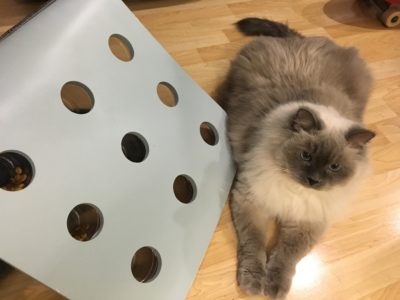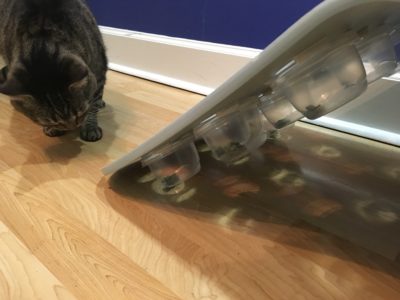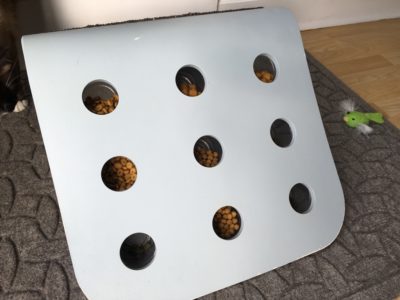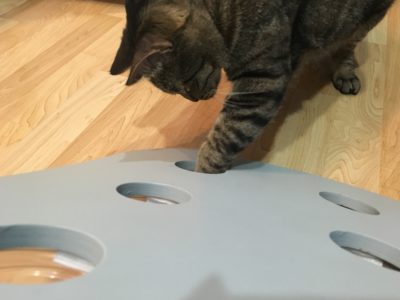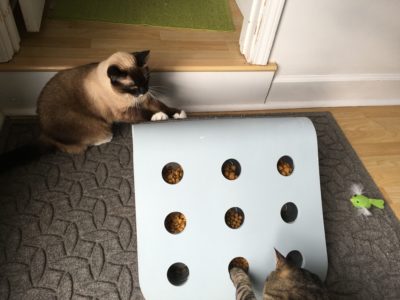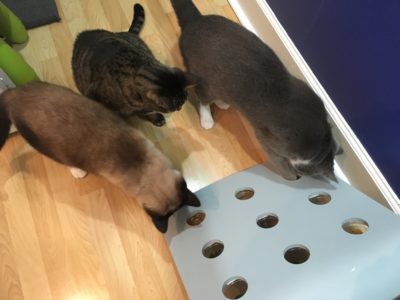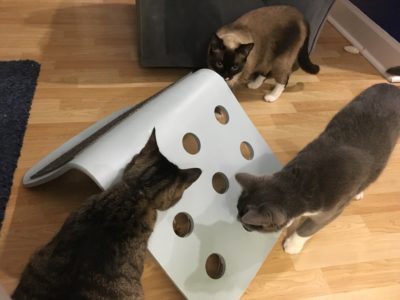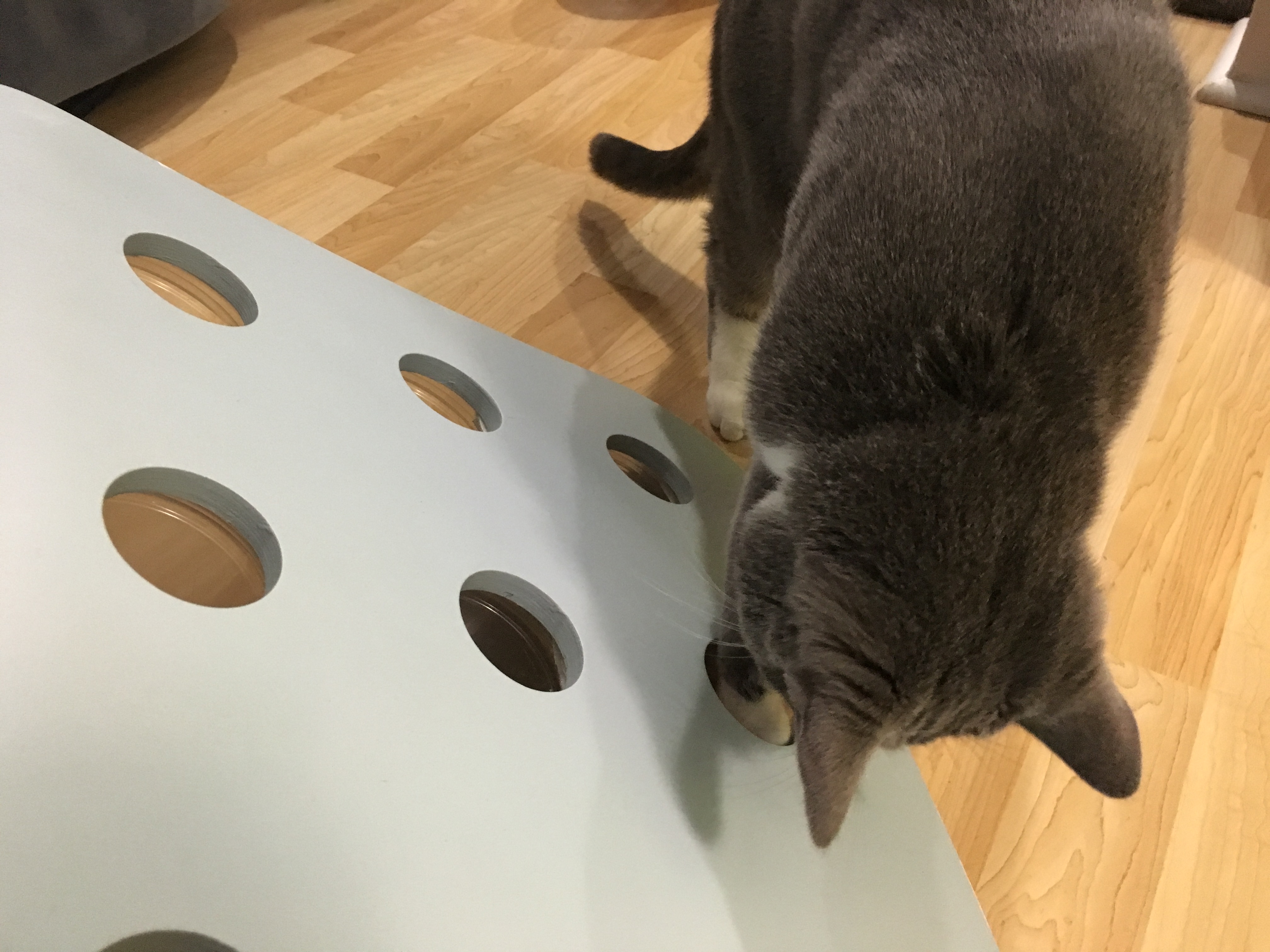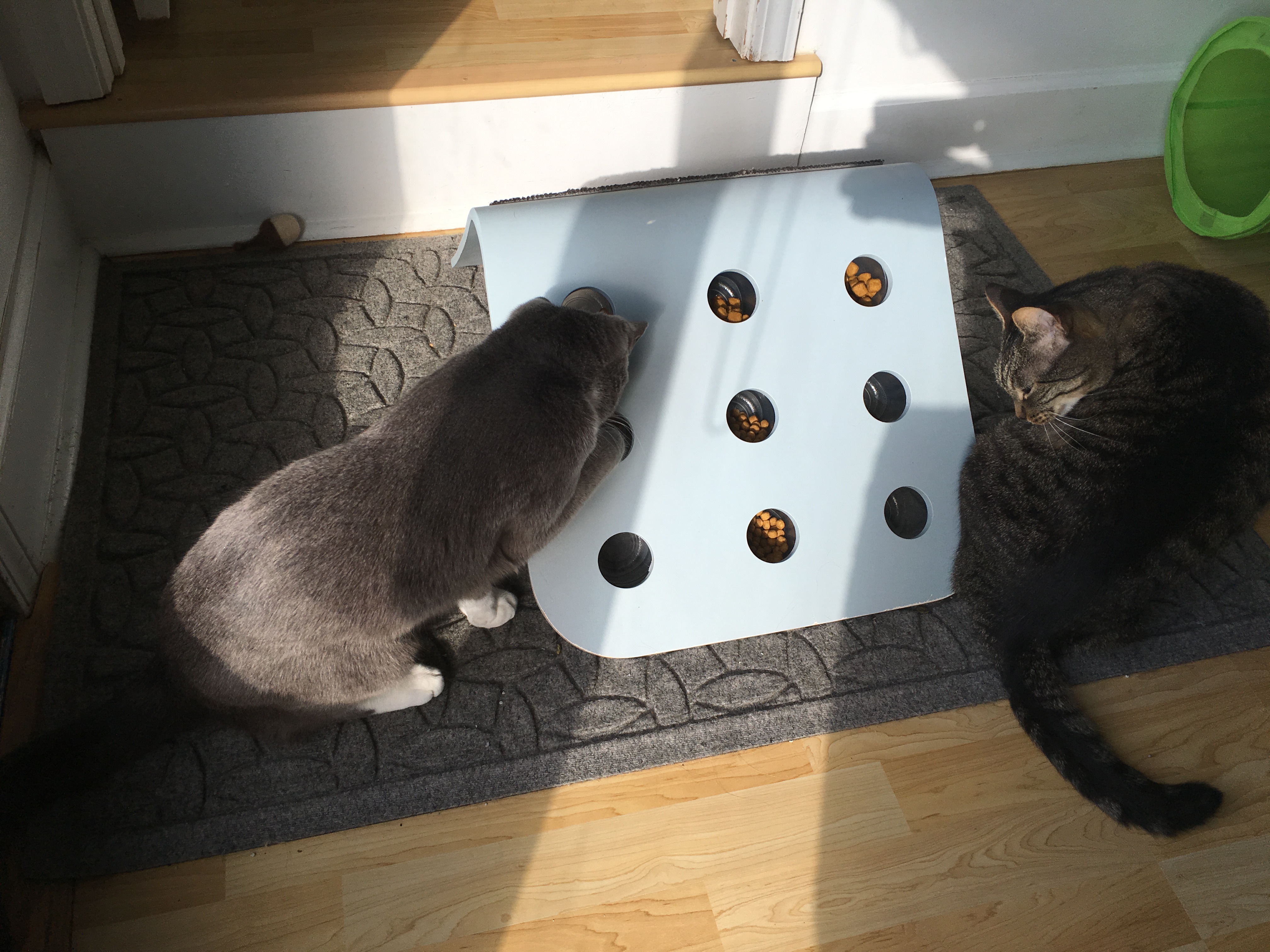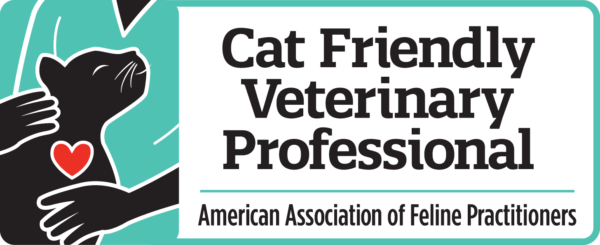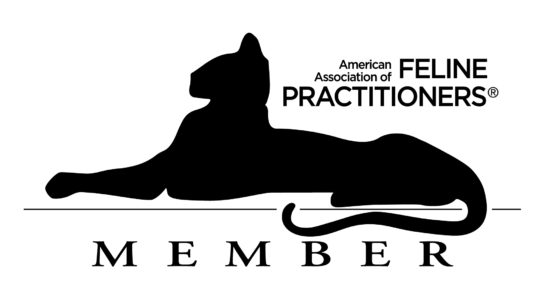This is the quick version! Learn the steps to pill your cat using only training and positive reinforcement, no restraint required! Please see the myriad of other training videos available on my website @Fundamentally Feline (.com) and You Tube channel for more detailed medicating tips.
Mat Training as a Treatment Station (and a step-by-step pilling guide)
Some pet parents (and their cats) find it easiest to train their cat to come to a specific location and medicate them in that spot. The cat learns that this location is a place where good things happen and are often agreeable to handling in these areas. If the targeted location is movable, like the mat demonstrated here, anywhere can be a positive location to medicate! You can even bring your cat’s mat to the veterinarian and place it on the exam table. I’ve done this! It works! High fiving the vet and getting an exam all with fun and treats. The end of this video also offers a step-by-step pilling tutorial.
Training Your Cat to Accept Oral Medications
This video walks you through step-by-step instructions and proper pilling techniques for cats. By keeping training fun and positive you will see that the cats willingly participate and are actually eager to get their medications! Cats can be pilled and its easier than you think! No more wrapping them in towels, squishing them between your knees or yucky tasting concoctions disguised as “palatable”. Learn to pill your cat for their quality of life and yours!
Litter boxes: get the scoop part 2! What should it be filled with and how often should it be cleaned?
This is part two in a series about litter boxes where my goal is to change the human perception that litter boxes have to be gross, smelly and unsightly. They do not have to be.
In this post we will explore different types of litter to offer your cat, how often you should be cleaning their box, what you should be using to clean it, and how often the box itself should be replaced.
That is correct, your litter box should NOT be around for the entire life of your cat contrary to common practices!
Please join me in being the change cats so desperately need and let's make their litter box the cleanest and nicest boxes in town!
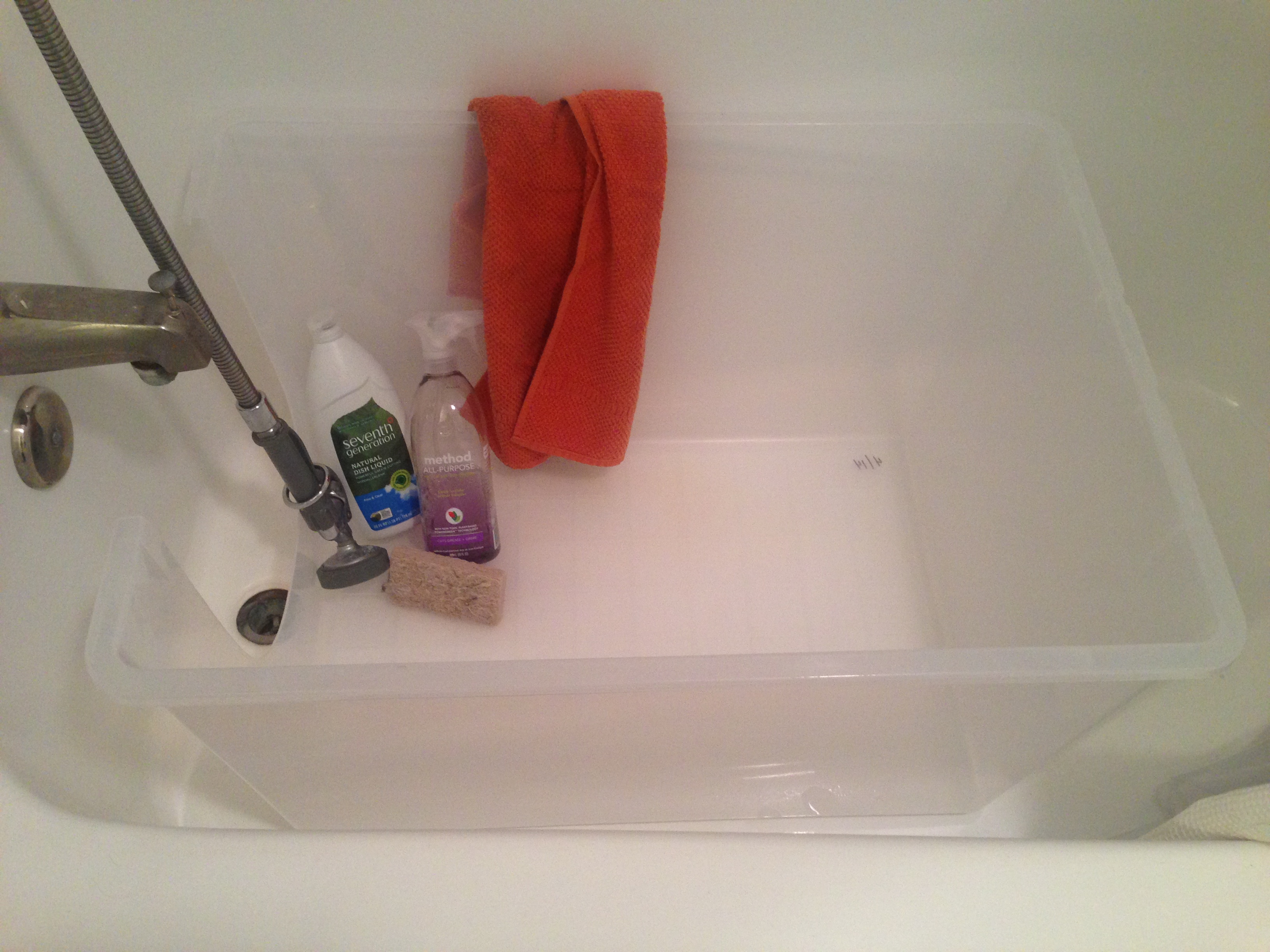
To clump or not to clump, that is the question.
If clay, non clumping litter is selected about 1-1.5 inches of litter should be offered to cover the bottom of the pan thoroughly. It is difficult to scoop out urine, though a children's sandbox shovel can work nicely. Because it is non-scoopable it is recommended to dump the entire box daily.
Unfortunately, most humans that use this type of litter only scoop out the fecal material and then stir in the soiled, urine soaked litter. This is NOT an acceptable way to maintain the litter box.
To the cat, the entire box is now soiled and there is not a clean place to step. This is very much like us using a public toilet that is not flushed and has pee on the seat. You would go to the next stall wouldn't you? Well, your cat can't, so they choose the dining room carpet instead! After all, it is soft, absorbent and always clean.

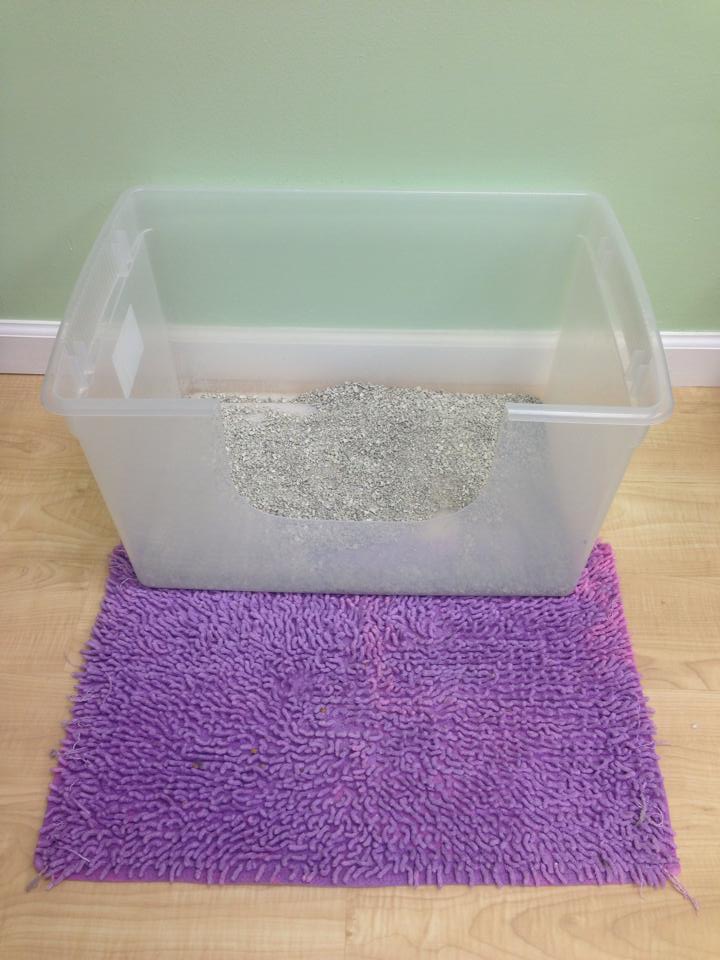
Clumping litter is preferred by the majority of cats and their humans. But cleanliness can still be a huge issue. Cats do not ever want to have to step on urine or feces to go to the bath room (See Part 1 of this series about size and number of boxes).
Clumping litter allows for easier removal of waste and you can provide the preferred litter depth (for most cats) of about 3-4 inches.
Let's talk litter depth for a minute. Too deep is well, too deep and cats don't like to feel as if they are navigating quicksand. This is especially important with seniors!
Too shallow leaves the box gummy and gross and can make it difficult for the cats to leave the box without soiling their paws.
Adjustments may need to be made based on individual preferences, handicaps, disease processes etc.
All litter should be scooped daily,
twice daily is better.
Alternative substrates: thinking outside the box
While some cats will use whatever you offer others have distinct substrate preferences. A cats paw pads are extremely sensitive and some textures may just not feel good to a particular individual.
For the most part cats prefer the softest texture you can provide. Sadly, there are many products on the market made for humans and not cats and they are too hard on their delicate feet. Litters to avoid include: pine nuggets, newspaper pellets, hard plastic crystals. These litters are designed by and for humans and in most cases do not appeal to cats.
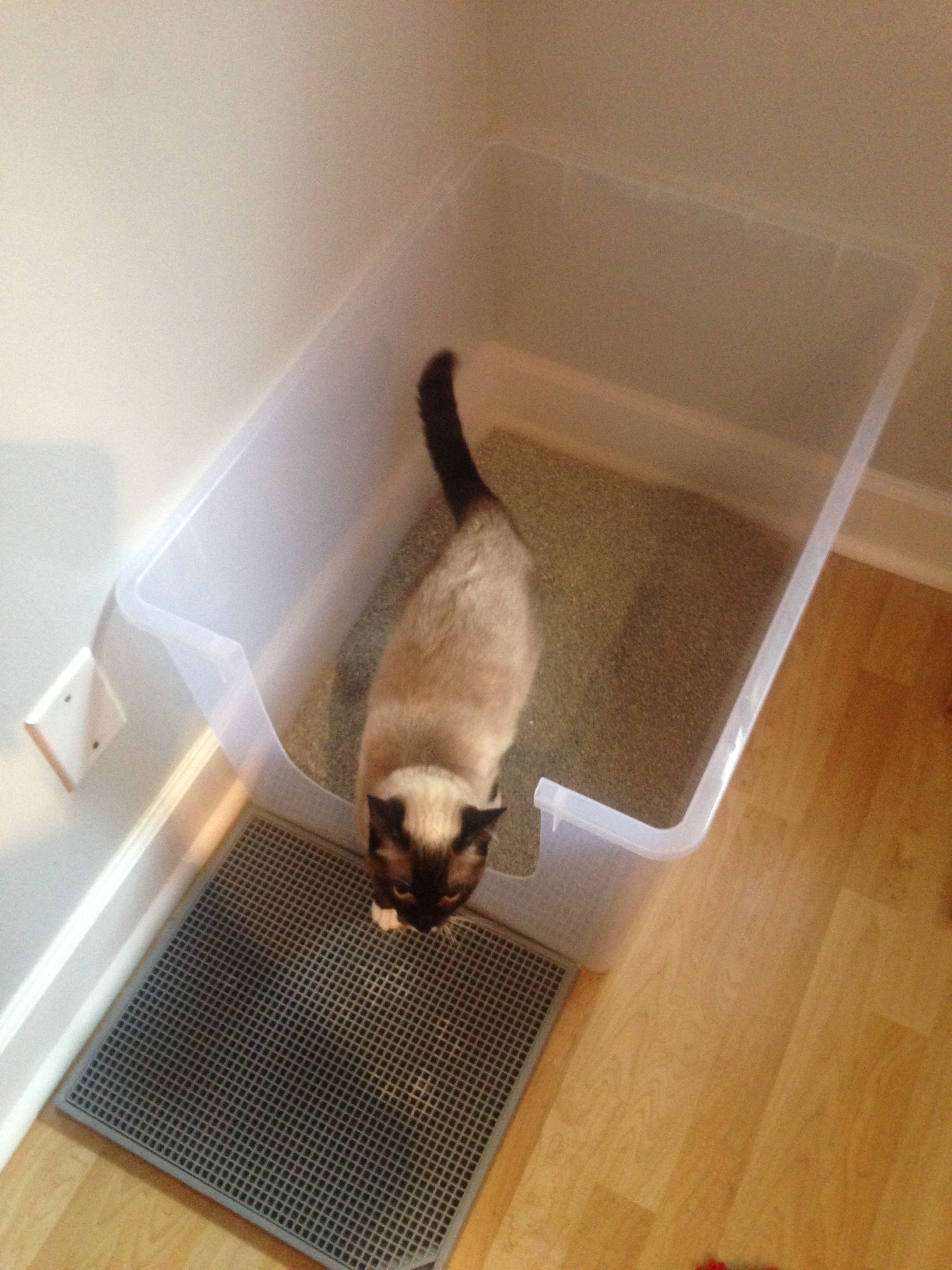
Alternative Substrate Ideas:
- Puppy training pad
- Empty pan (no litter at all!)
- Shredded paper or paper towels
- Sandbox sand
- Sterile potting soil
- Carpet scraps/washable bathmats
*This list is for cats that have already decided that traditional litter is not something they are interested in using.
A word of caution...
Abruptly changing your cats' litter is very stressful. There is a scientific way of going about solving these problems which allows your cat to make a behavioral choice. If your cat is not using their litter box and you would like help, please complete the behavior questionnaire for a consultation and I will help you through this process in a way that will give you the best possible outcome.
So how often should you dump and scrub the box and what should you use to clean it?
If using clumpable litter I recommend that you dump and scrub all boxes on average every 4-6 weeks. This will vary based on the number of cats, number of boxes and the frequency of use. (Hint: the more boxes you have the cleaner they remain for a longer period!) Use unscented dish soap or at least a scent cats like such as lavender or honeysuckle. Cats hate the smell of citrus so stop washing out their litter boxes with lemon scented dish soap if you would like your cats to continue to use their litter box! I like to scrub with hot water in the tub but allow the sun to dry them when weather permits.
If using clay litter and only providing a shallow amount since it needs to be entirely dumped daily, it should be scrubbed out at least once a week.
If using a puppy pad, empty pan, or one of the alternative mentioned substrates that do not clump the box may also need to be entirely washed more often.
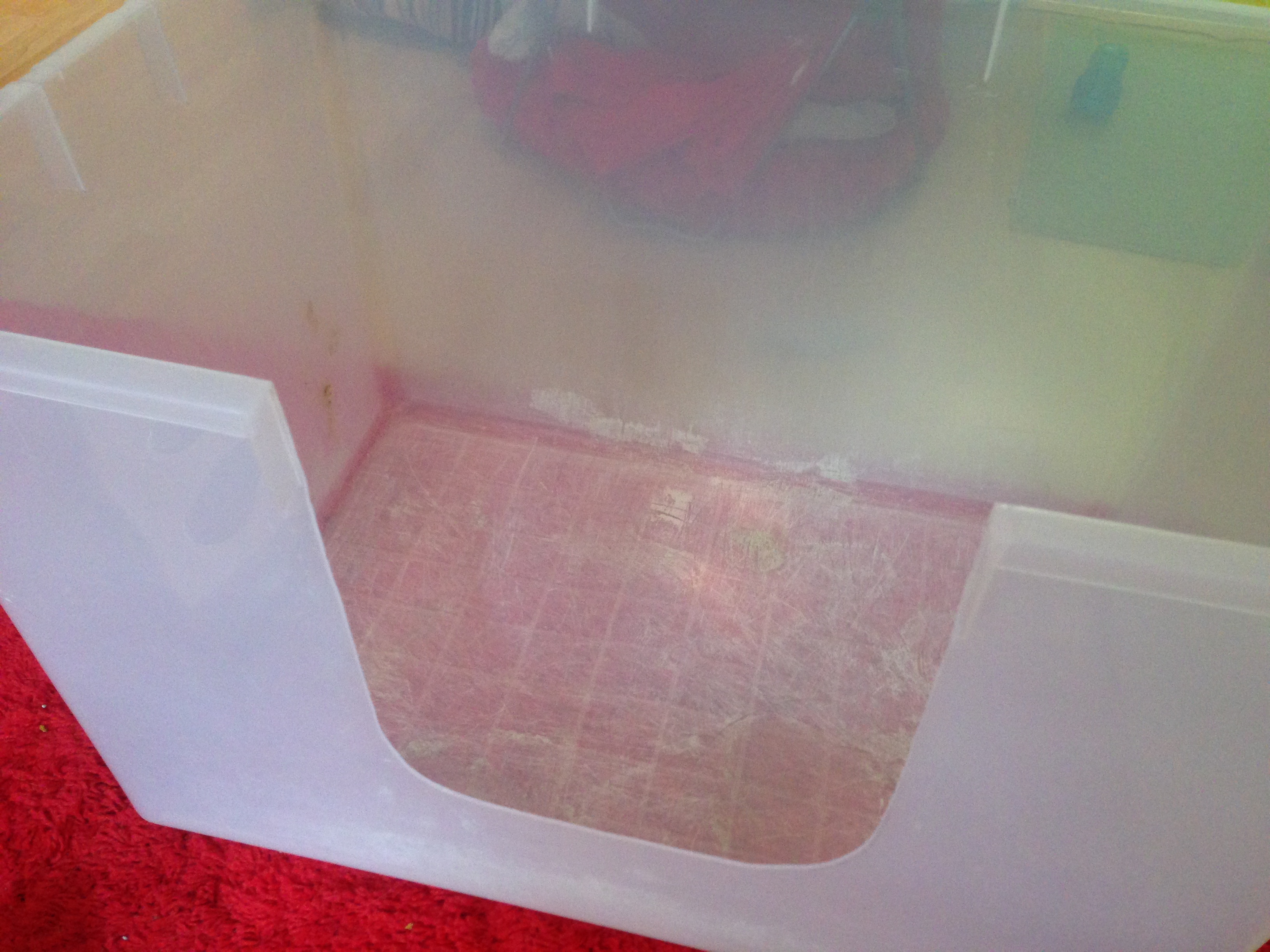
How often should I replace my litter box?
See all of those scratches on the bottom of the box in this photo?
Plastic is porous and harbors odor and bacteria which is why the litter box should be entirely replaced every two years!
Both the cats' nails and the litter granules scratch up the interior of the box and no matter how much you clean it, to your cat, it still smells yucky!
Using a Sharpie to date the bottom of the box is a helpful reminder that it is time to get new ones.
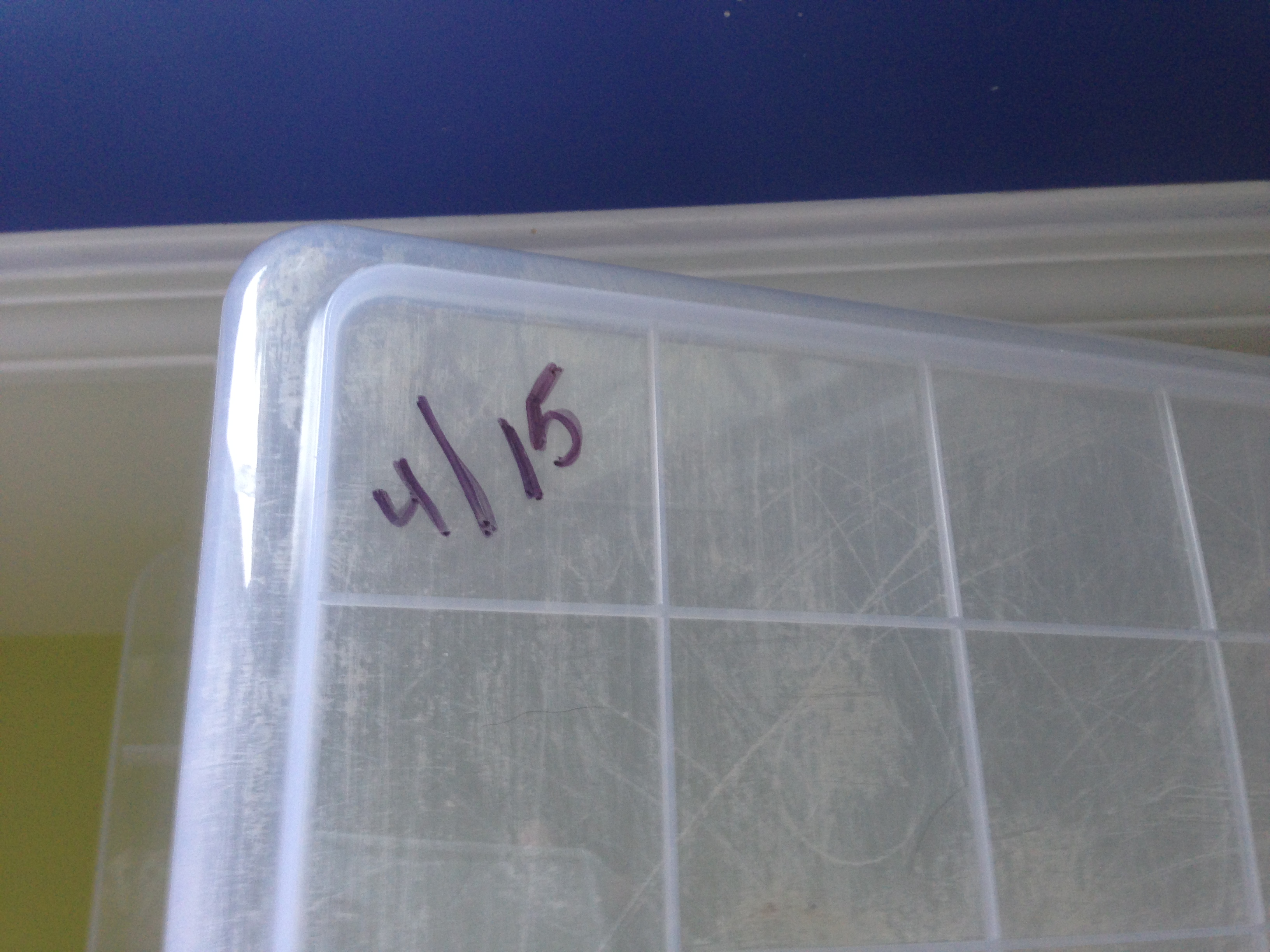
A quick reference guide of basic do's and don'ts
Do NOT:
- Deodorizers
- Scented litter
- Not cleaning the box with soap & water
- Hooded boxes
- Automatic boxes
- Not scooping daily
- Making box too hard to get to
- Using old boxes/pans
- Utilizing cat doors
- Plastic liners
- Changing brands of litter often
- Placing food and water near litter
- Using citrus scented cleaners
- Use of strong smelling or ammonia based cleaners
- Placing box in busy/loud areas
Please DO:
- Offer large boxes
- Scoop daily, twice a day is best
- Use unscented litter
- Offer soft, fine grain litter
- Place boxes where you and your cat spend time
- Use unscented cleaners or
- Use cleaners with scents pleasant to cats (lavender, honeysuckle, basil)
- Dump and scrub out box every 4-6 weeks
- Entirely replace box every 2 years
- Provide one more litter box location that the number of cats in the home
- Do not place boxes in dead end areas with only one way in and out
In summary
Think about how your cat experiences the litter box. All you have to do it scoop it, they have to dig in it, posture to pee or poop, cover and then groom the scent of the flowery fragrances off of their coats. The fragrance that YOU like, not them. Cats don't eliminate in a pile of perfumed sand, they go in dirt, sand, pine straw or mulch. Plus, scented cat litter, combined with the ammonia of urine, well, that IS stinky!
Use a soft, unscented litter, scoop daily, dump and scrub out every few weeks, and change your box entirely every 2 years and litter boxes will not stink up your house.
Join my crusade to prove to the world that you can have litter boxes that are not ugly or stinky, but rather boxes you can be proud to show off. Get the scoop! Be the change!
Litter boxes: get the scoop! What kind, how many and where.
This series is an attempt to change the perception of the litter box. It does not have to be gross, smelly and something you hide. Instead, be proud of how clean you keep your cat litter box.
Would you want to go to the bathroom out in the garage in inclement weather? I bet not!
How do you feel about getting swatted in the face each time you come and go from the restroom? Cats do not find it fun either.
Do you want to use an unflushed toilet in a public restroom? Well, your cat doesn't either! We complain when they use locations other than their litter box, yet what we provide is so often unacceptable.
Join me and let's be the change that cats so desperately need.
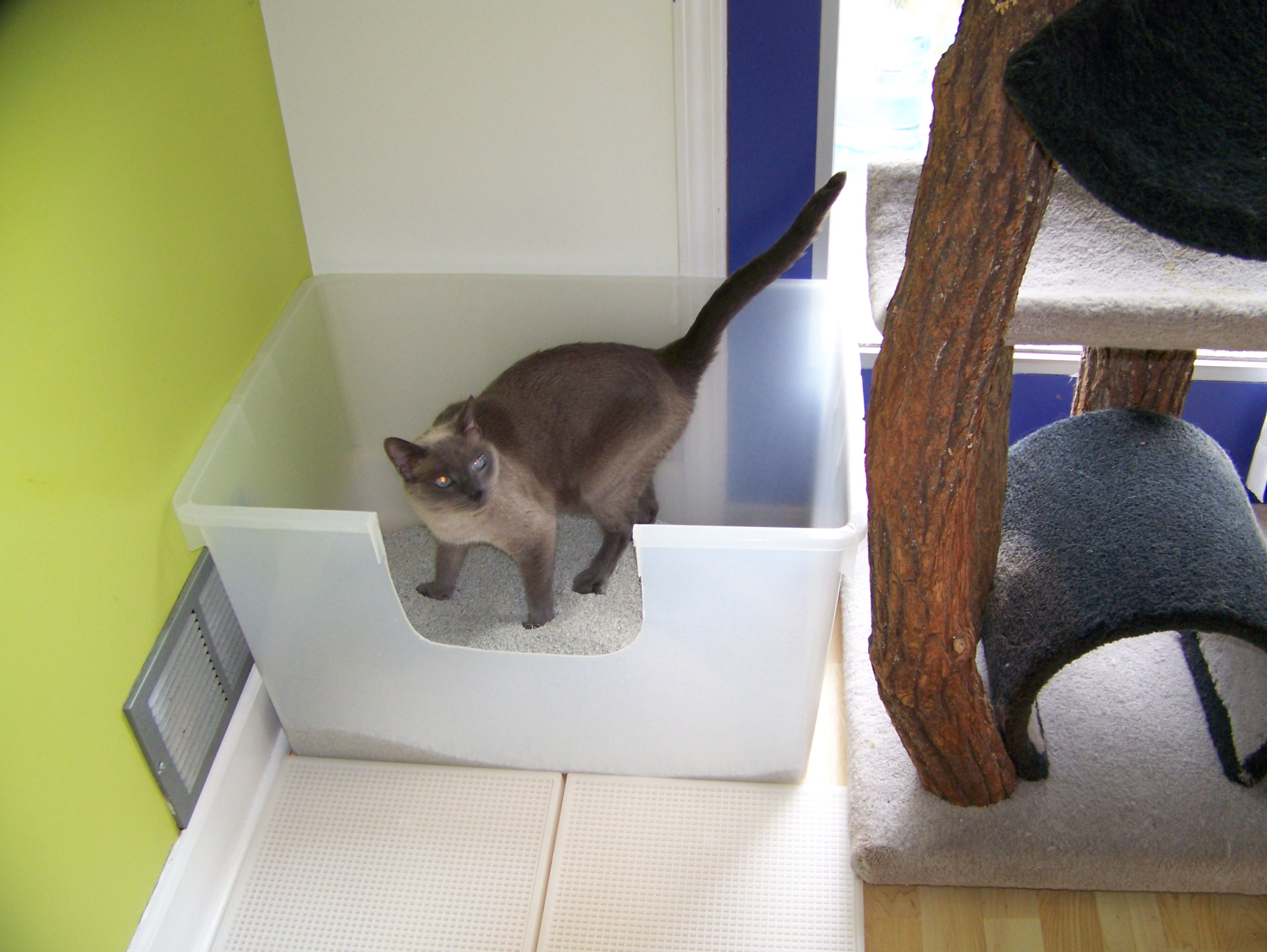
Litter boxes should be BIG! In fact, one and a half times the length of your cat!
They should be CLEAR so they can see who is approaching. Cats are a species that are both predator and prey. When they eliminate they are in their most vulnerable state. They must feel safe and secure when they use the box or they will find another place to go to the bathroom where they do feel safe!
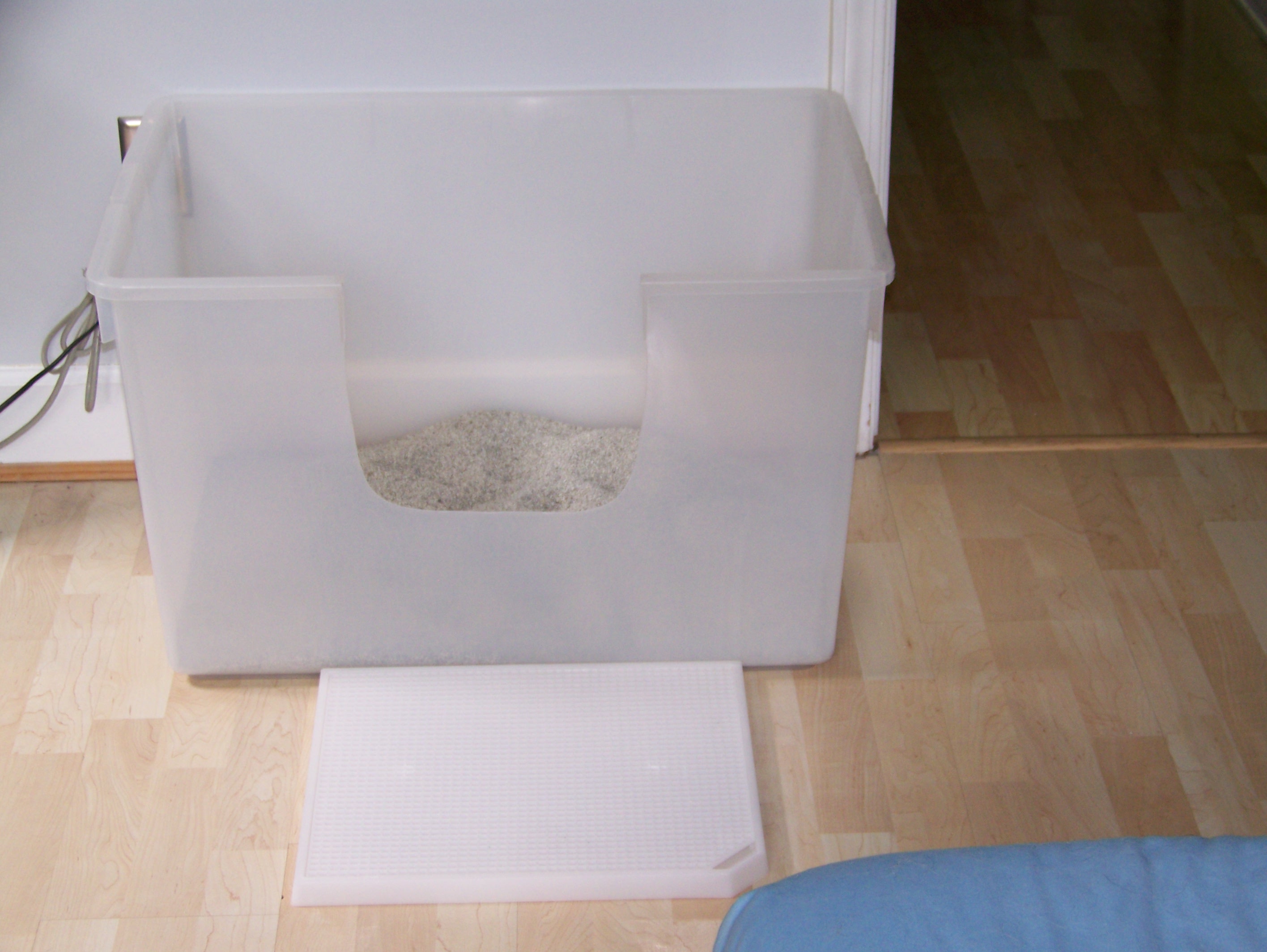
Large clear storage totes offer the function of a hooded litter box without the hood. For the humans, this keeps the mess contained and the cats cannot accidentally pee and poop over the sides of the pan. For the cats, it offers a nice large surface area to use and they can see if another cat, the family dog, or a toddler is approaching.
Can't live without a hood?
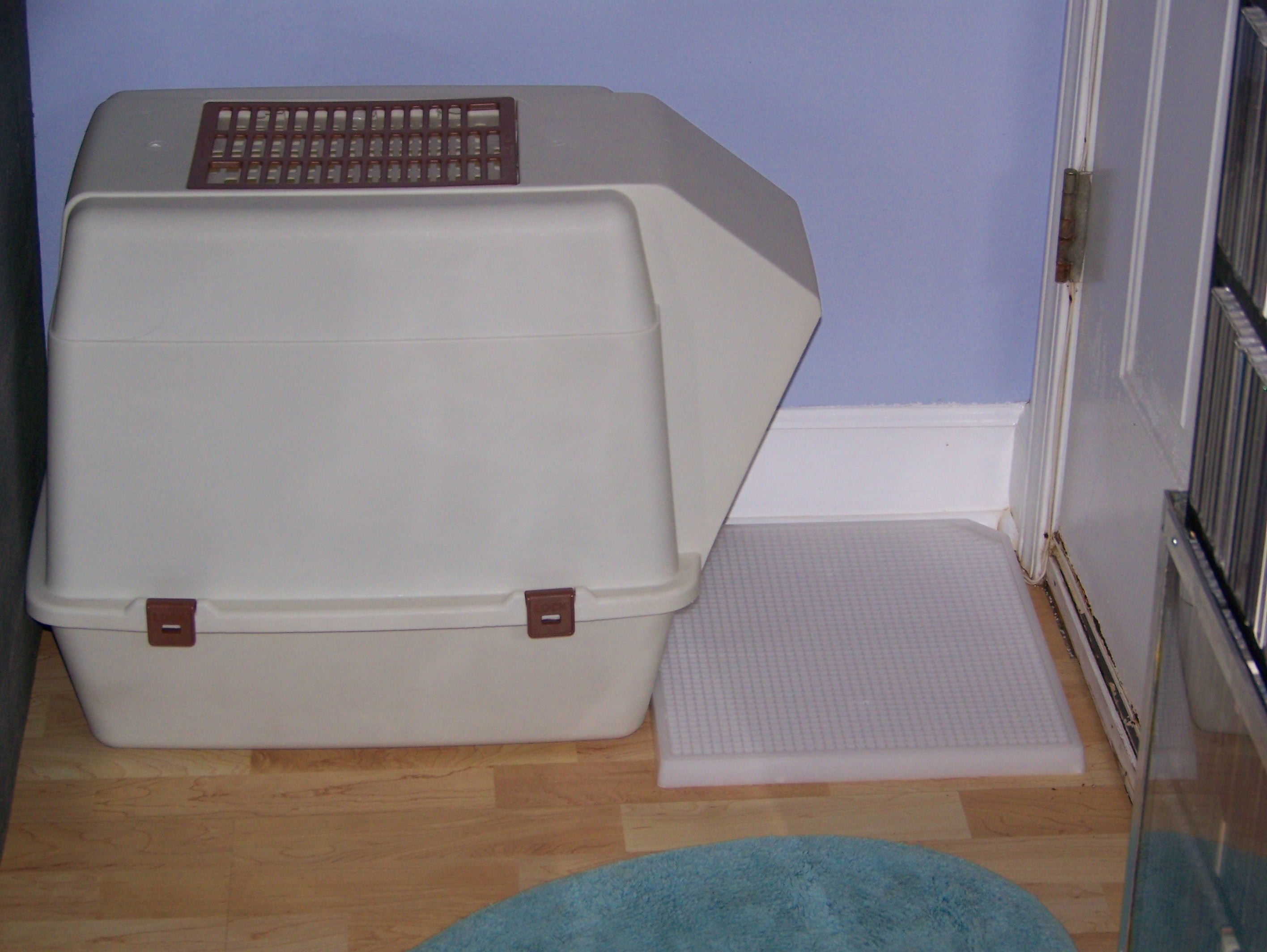
Outdoor cats do not eliminate in cave-like environments. This would leave them vulnerable to being attacked or hunted. If you got smacked in the head or ambushed every time you used the bathroom you would find a new, safer place to go, wouldn't you?
Left: an opaque hooded box can harbor odors and leave cats feeling threatened. Notice the "dead end" placement too.
Right: if you just cannot live without the hood this is the best covered box to have because at least it is clear so the cats can see who is approaching and be able to anticipate an ambush. This should only be an option, but NOT the only box offered!
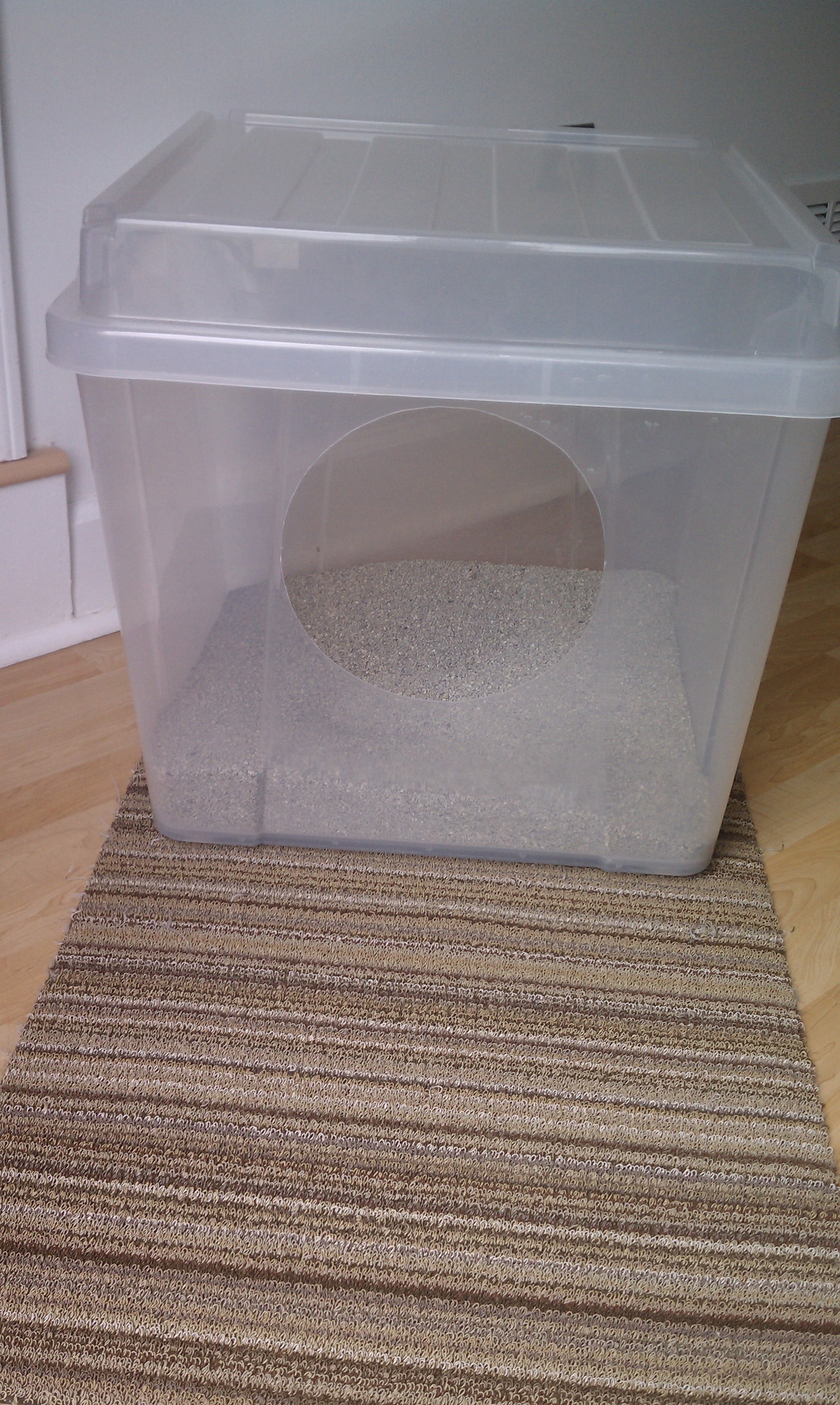
Wait, I need how many litter boxes?


If you have 2 cats than you need 3 separate litter box LOCATIONS!
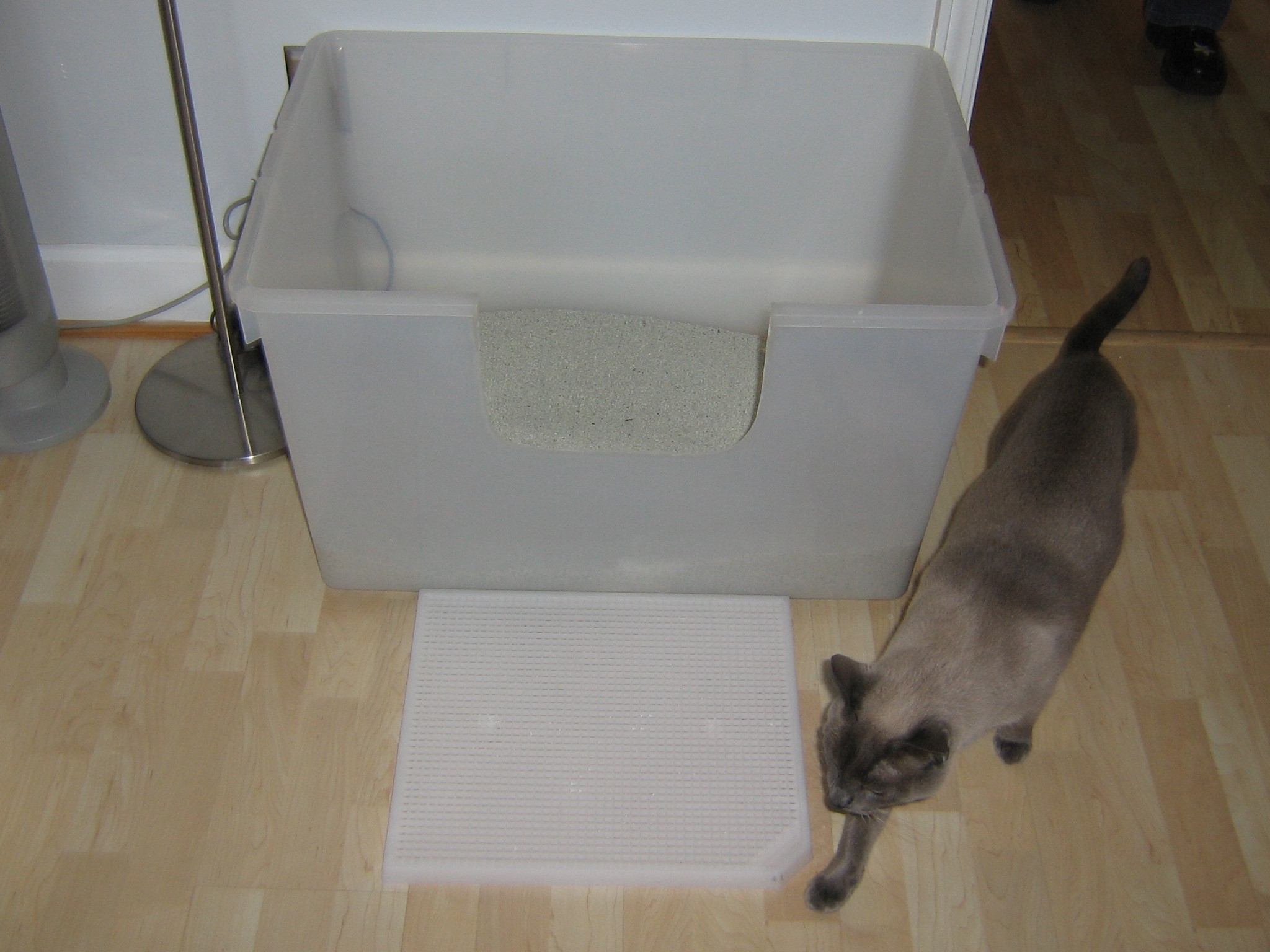
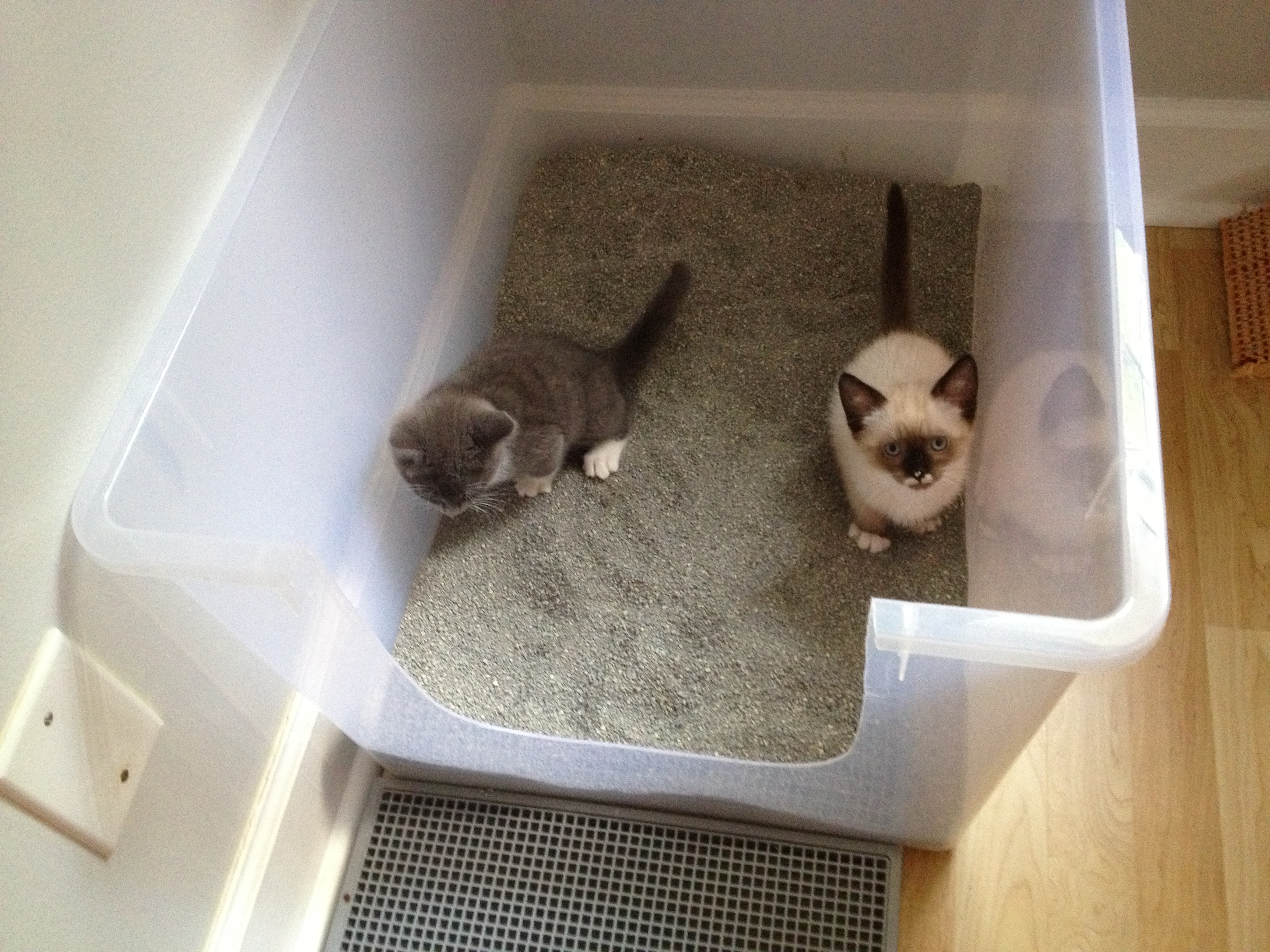
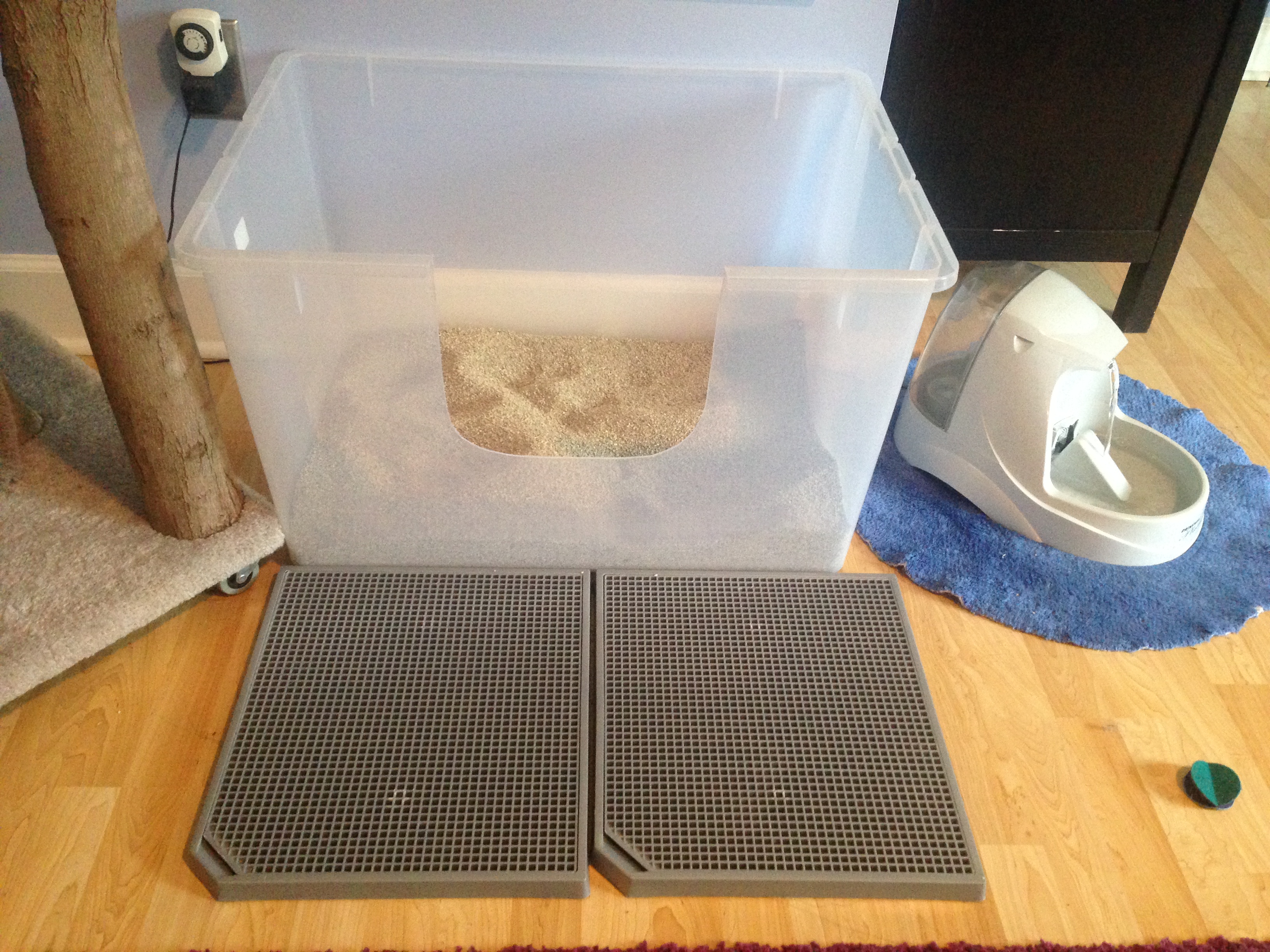
Cats prefer to urinate in one location and defecate in a completely separate location. This is normal cat behavior. Even if you have one cat you should provide two separate litter box locations.
Cats are fastidiously clean animals and never want to be forced to step on urine clumps or feces to eliminate.
Even if you have one cat, a litter box option on every floor is recommended. After all, we usually have a toilet on every level now don't we?
The more box locations you provide the more difficult it can be for one cat to "resource guard" and keep other cats from being able to access the boxes. Resource guarding is a common reason for elimination outside the litter box. One cat cannot be in multiple places at one time!
Litter boxes should be spread out, or "heathered" throughout the home. This also prevents odors from being concentrated in one area.
The truth of the matter is that this is simply a guide. It may be necessary to offer more boxes based on the relationships of the individuals sharing the space. These are guidelines but not hard and fast rules. Offer as many boxes as needed to keep the cats using them!
Where on earth am I going to put all of these litter boxes?
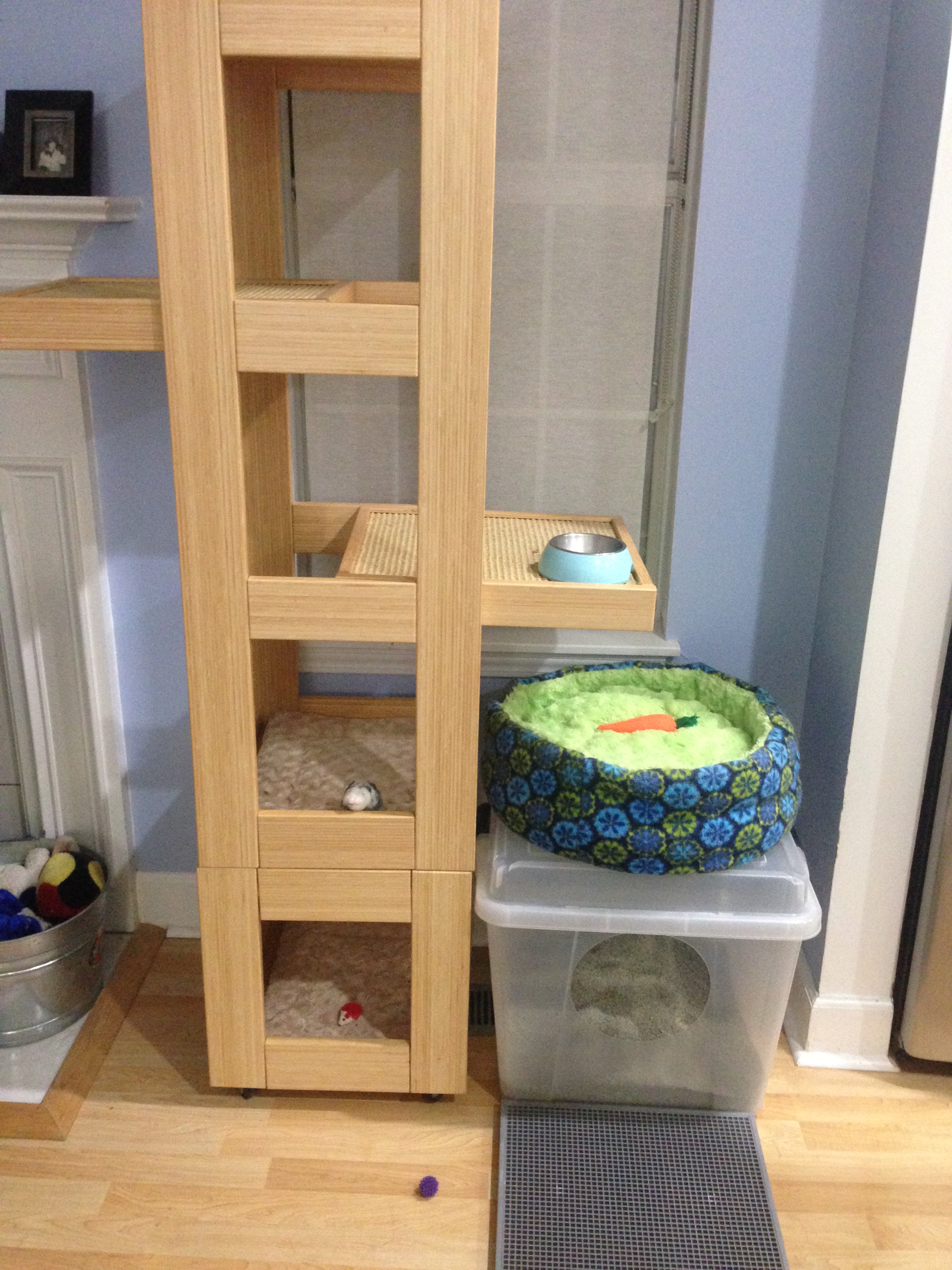
Just about anywhere!
Cats prefer to leave their smell where your scent is strong. Elimination is also communication! They want to mark you, their favorite human!
Cats prefer to urine and feces mark around the perimeter of their space whereas scratch marking is done in high traffic pathways. So be sure to place litter boxes around the perimeter and not in the center of the room.
Scoop daily, twice a day is better!
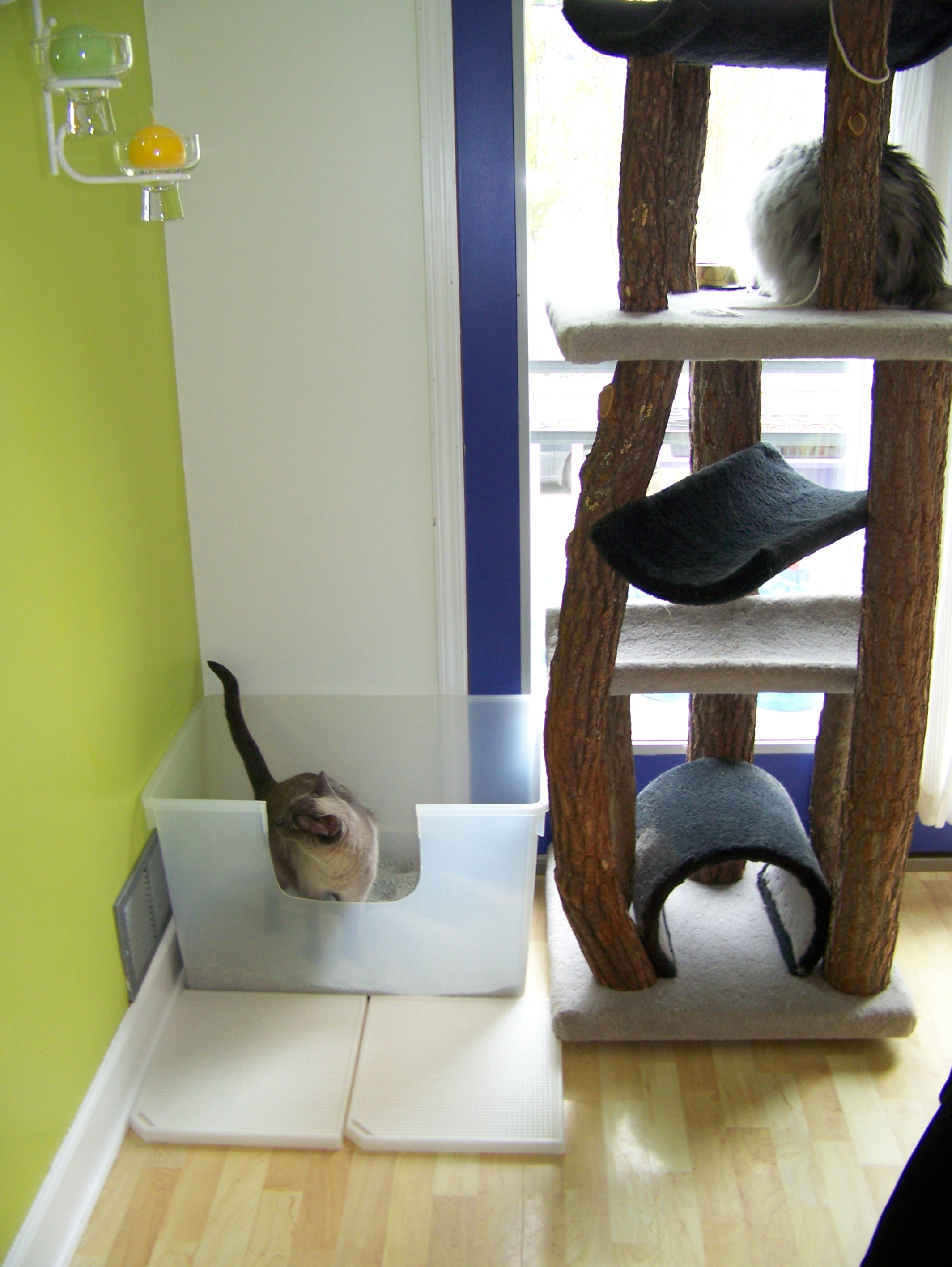
This box is in a living room (look closely it is beside the refrigerator heading into the kitchen). Note all that is provided in such a small area: vertical space, window perch, horizontal scratching options, canned food dish up high away from the dog, litter box and beds all in 2 sq feet!
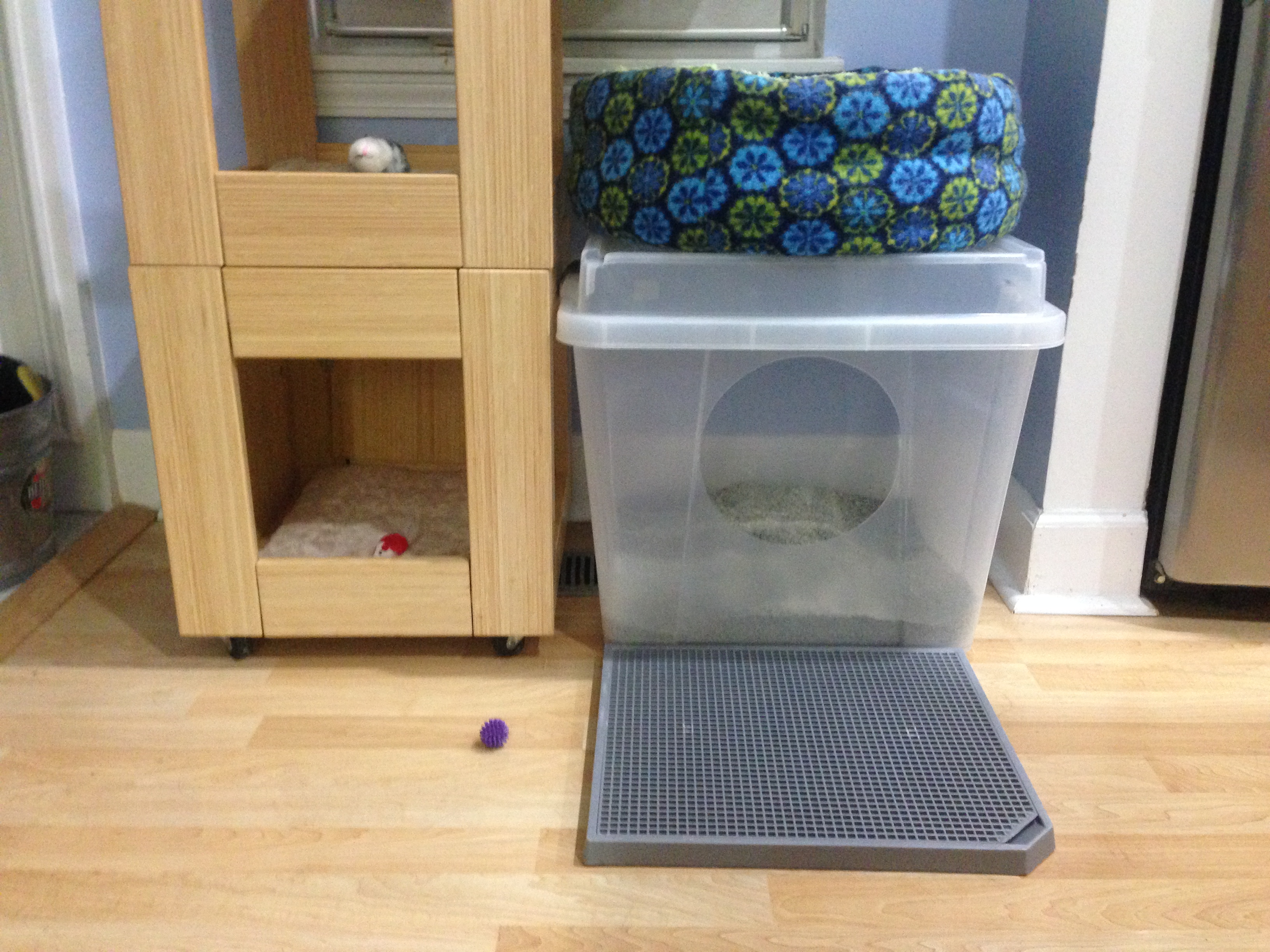
This box is in a dining area. The cats were urine marking the back door and needed an appropriate target in this space. They can exit the cut opening or jump up onto the cat condo to escape a potential threat. It is important to avoid dead ends when selecting locations. Feeding station, vertical space, window viewing, and litter all in a small square footage.
Bathrooms! You go to the bathroom there, why shouldn't your cat?! It's purrfect.
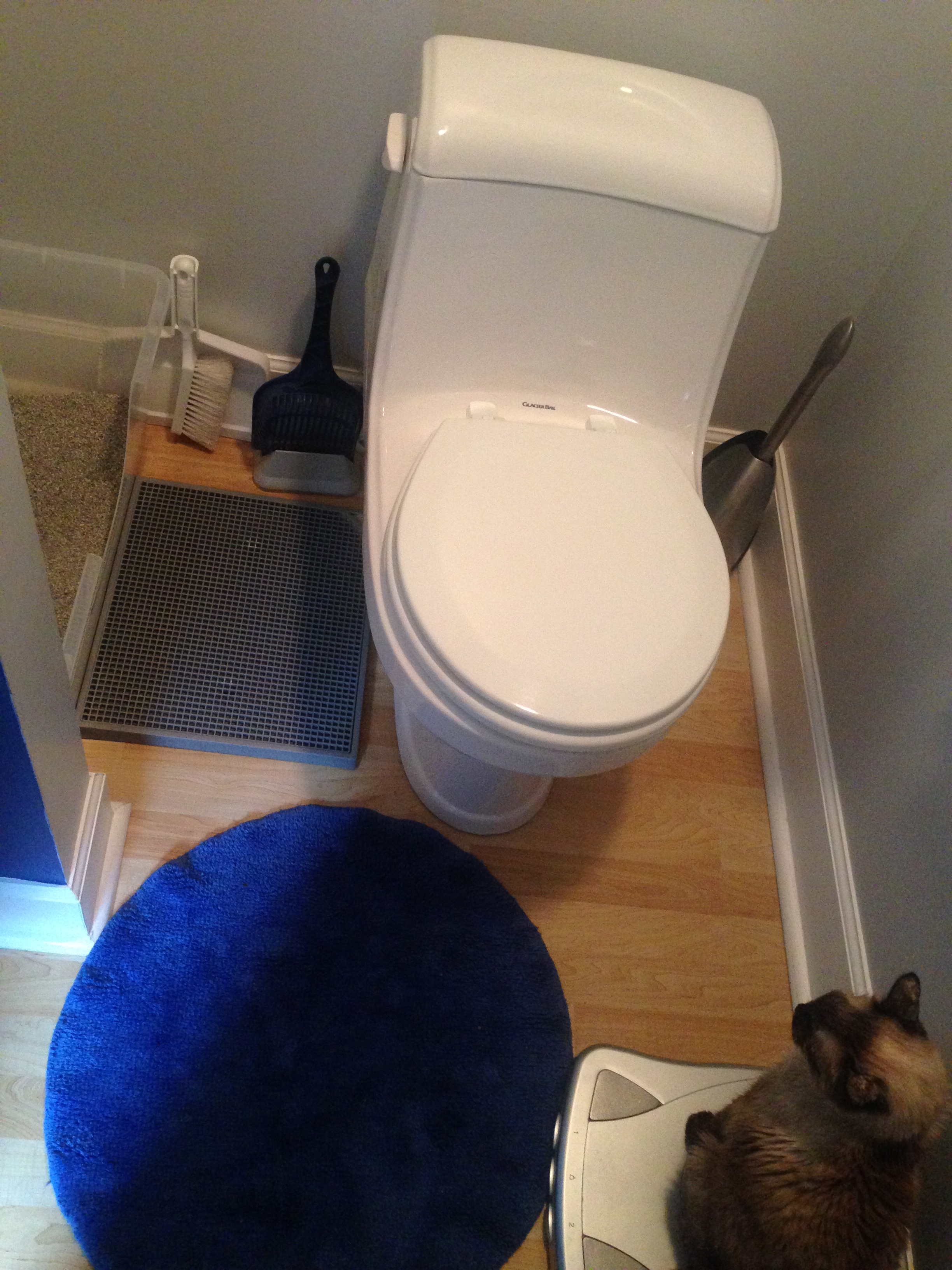
Left: a step out mat catches the litter to maintain cleanliness. High sided box contains most of the litter scatter.
Right: box opening is turned toward the toilet to minimize litter scatter and a bed placed on top to maximize amenities in a small home.
These two things are ONLY okay because of a harmonious household. Ideally rotating the opening to face out would provide easier access. It would NOT be recommended to have a bed on top in a home with aggression problems.
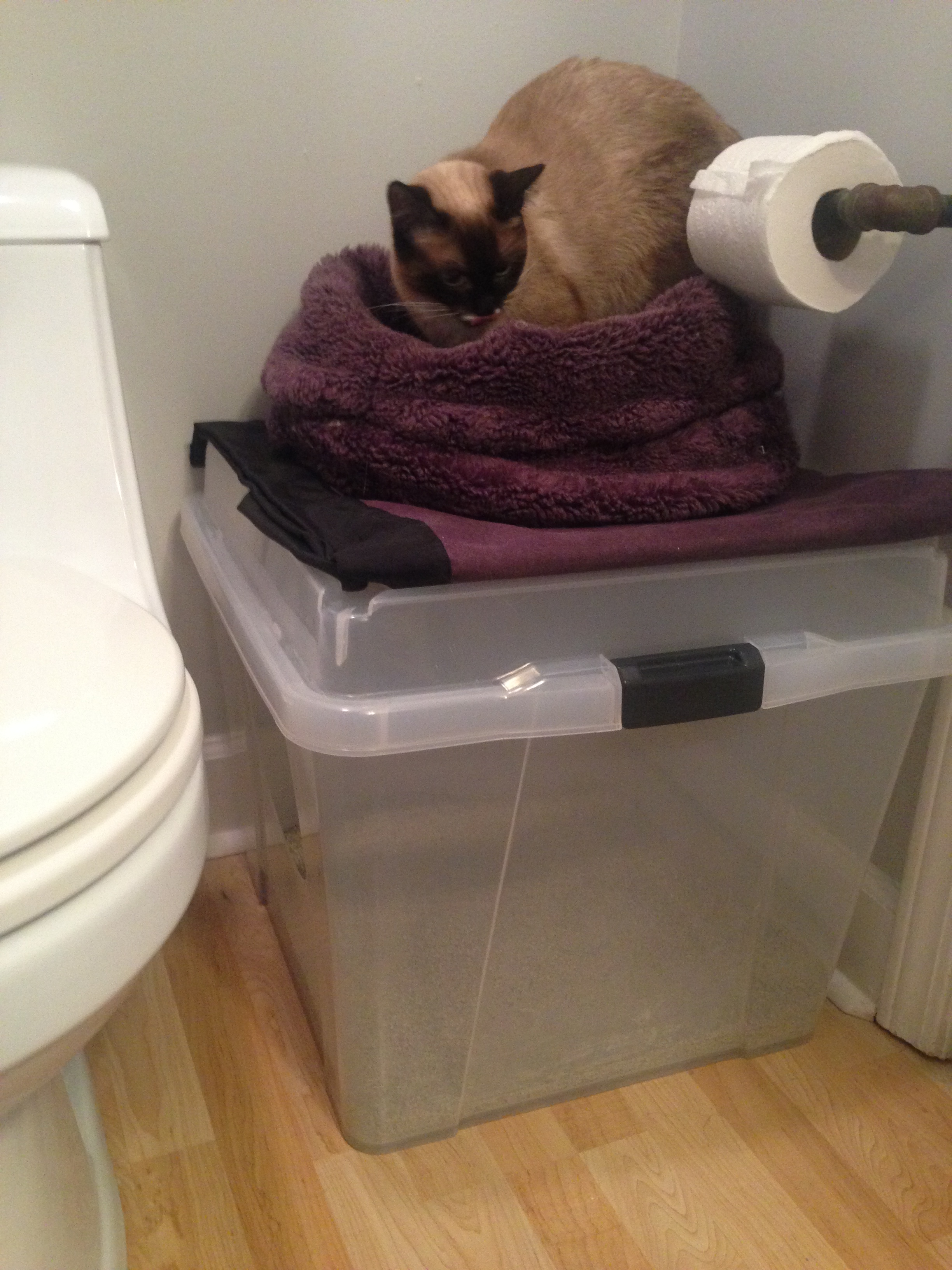
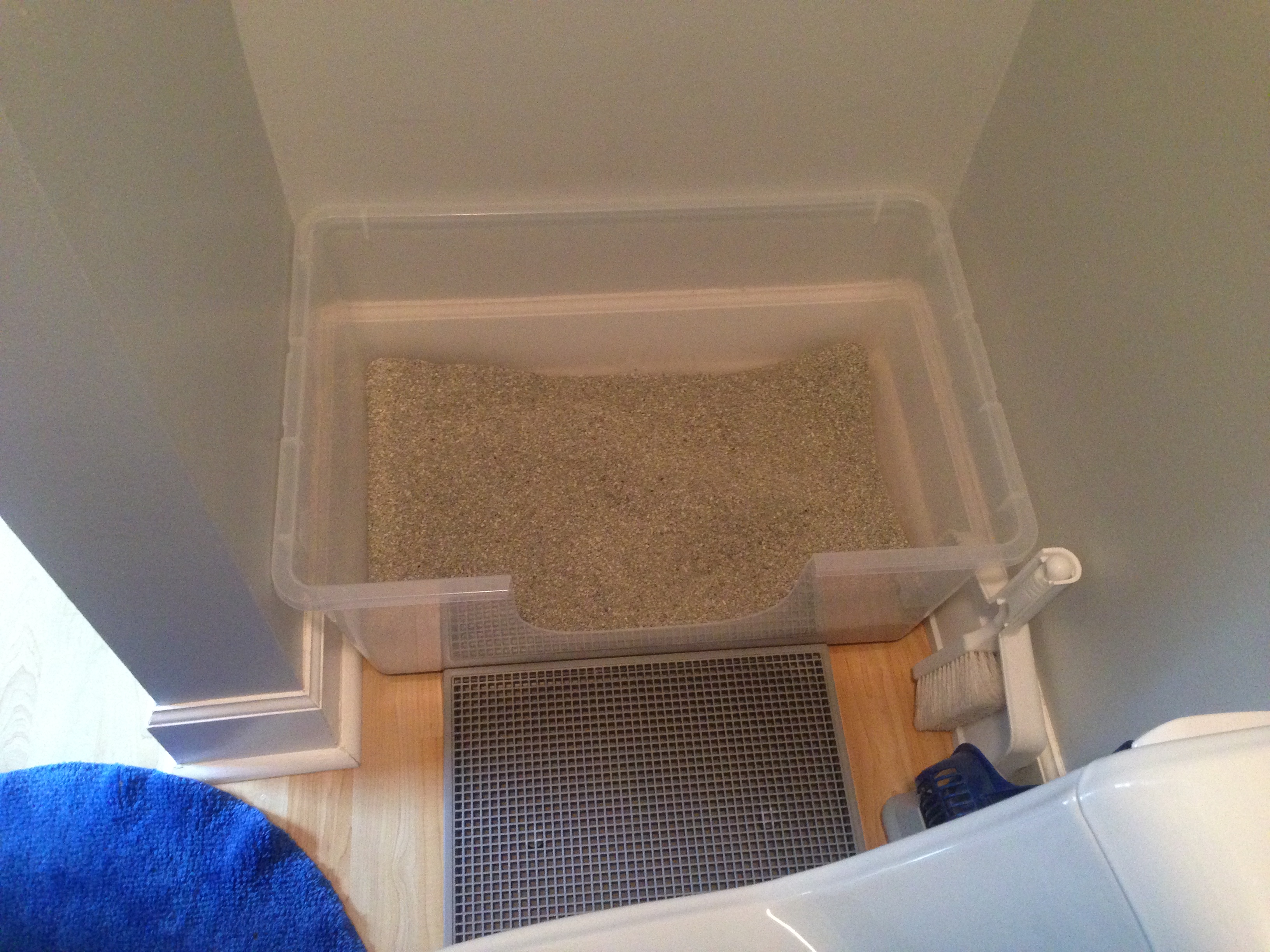
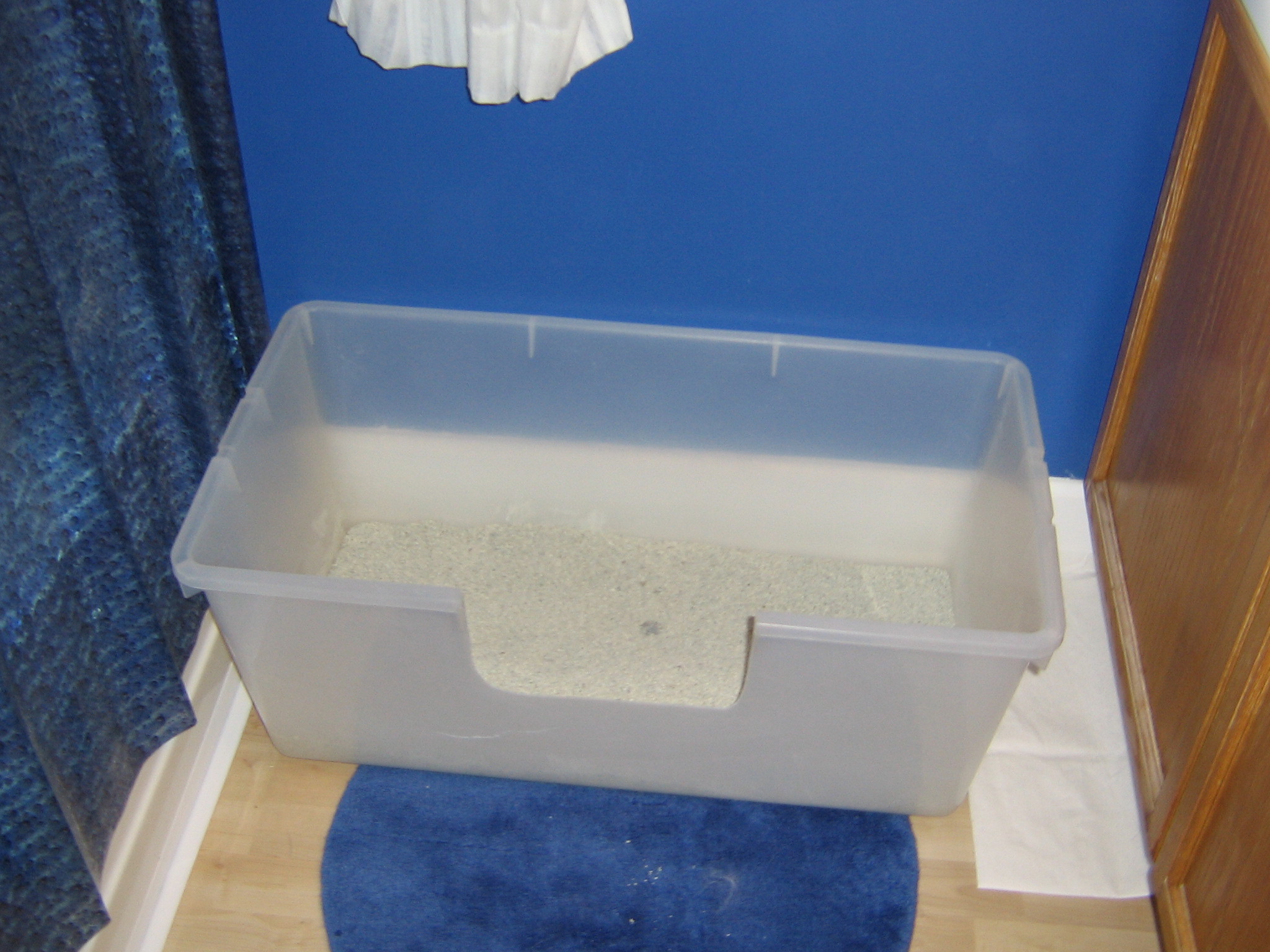
Dens, sitting rooms, sun porches, home offices, and yes, even the master bedroom!
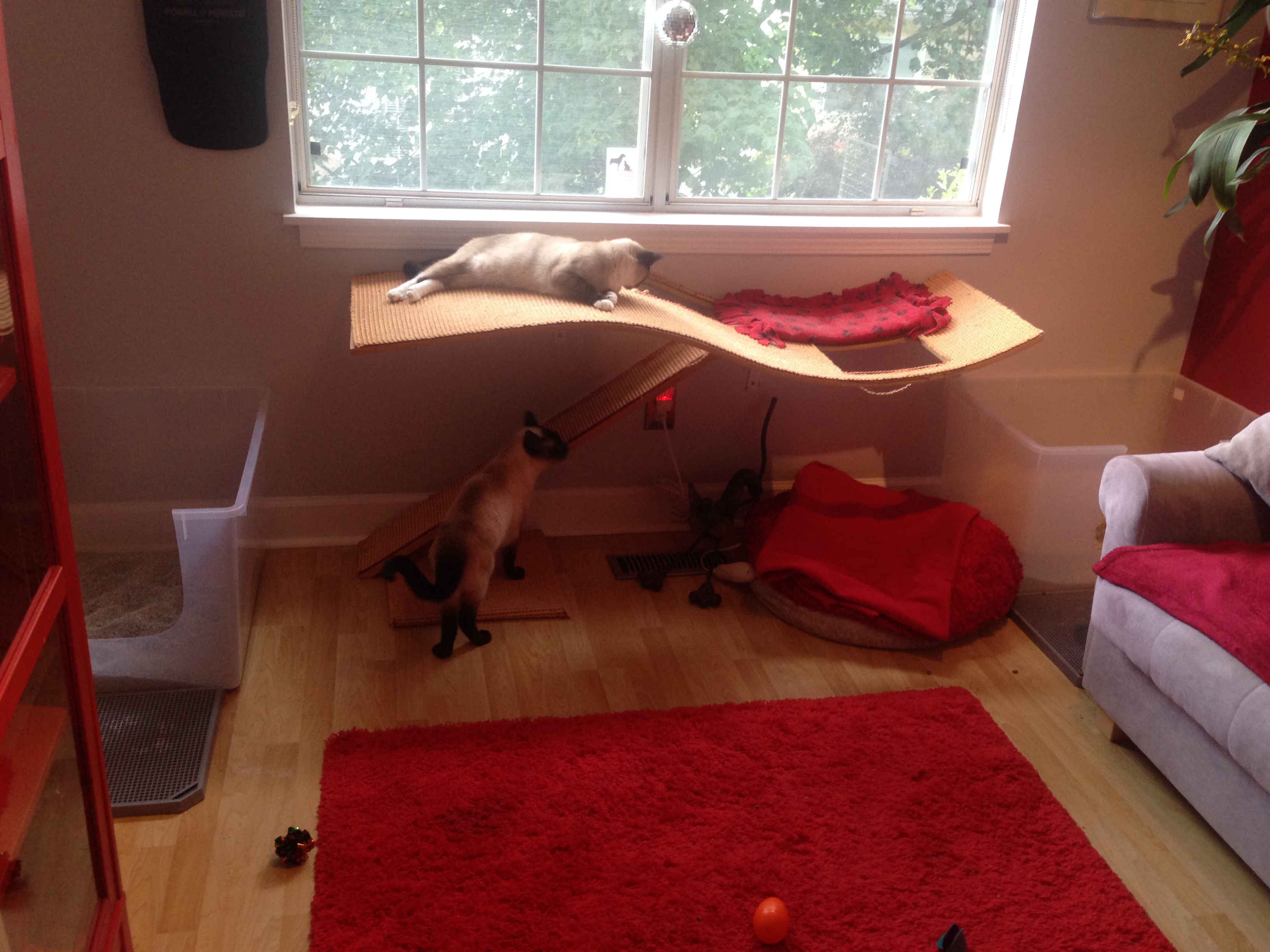
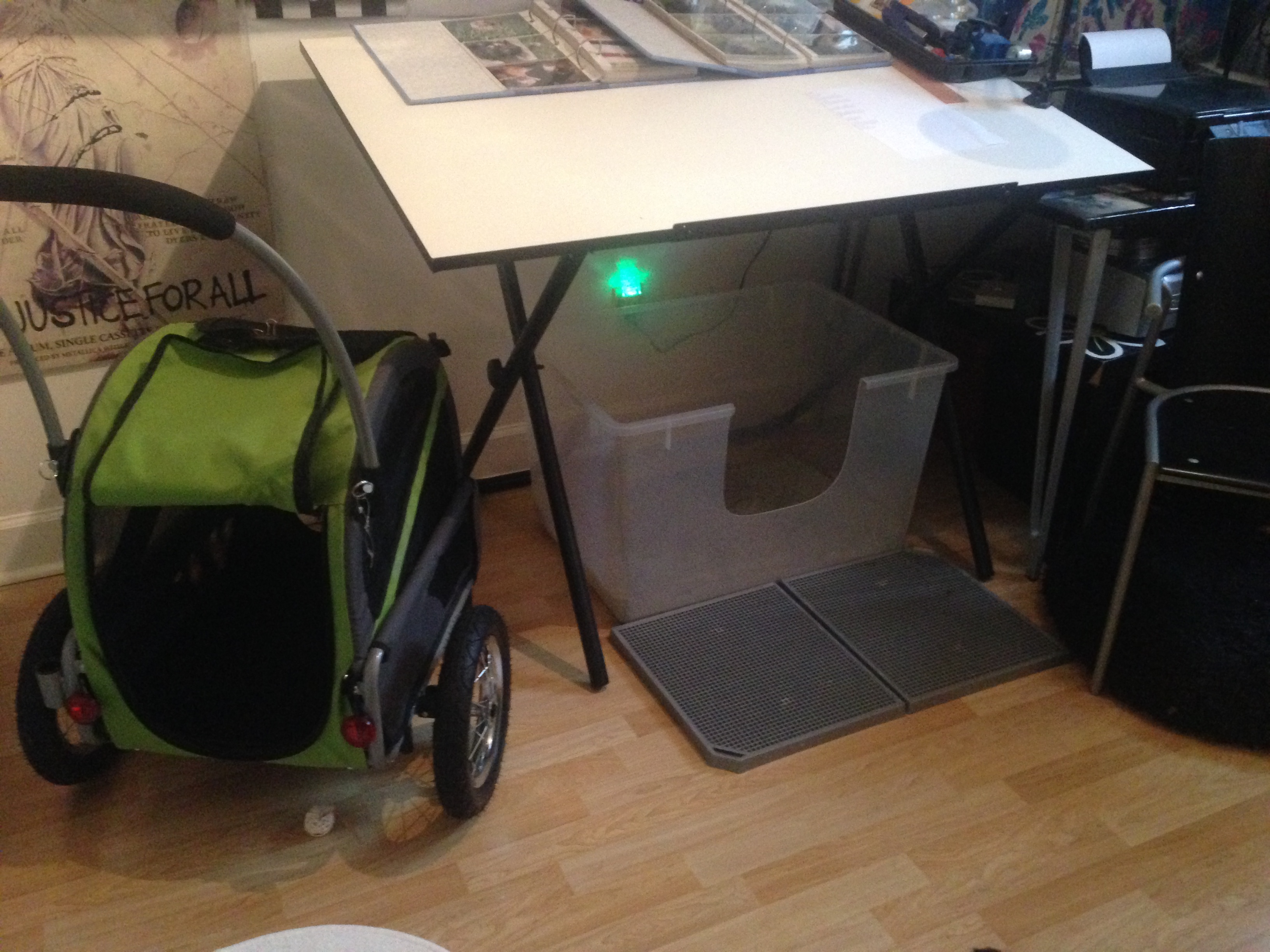
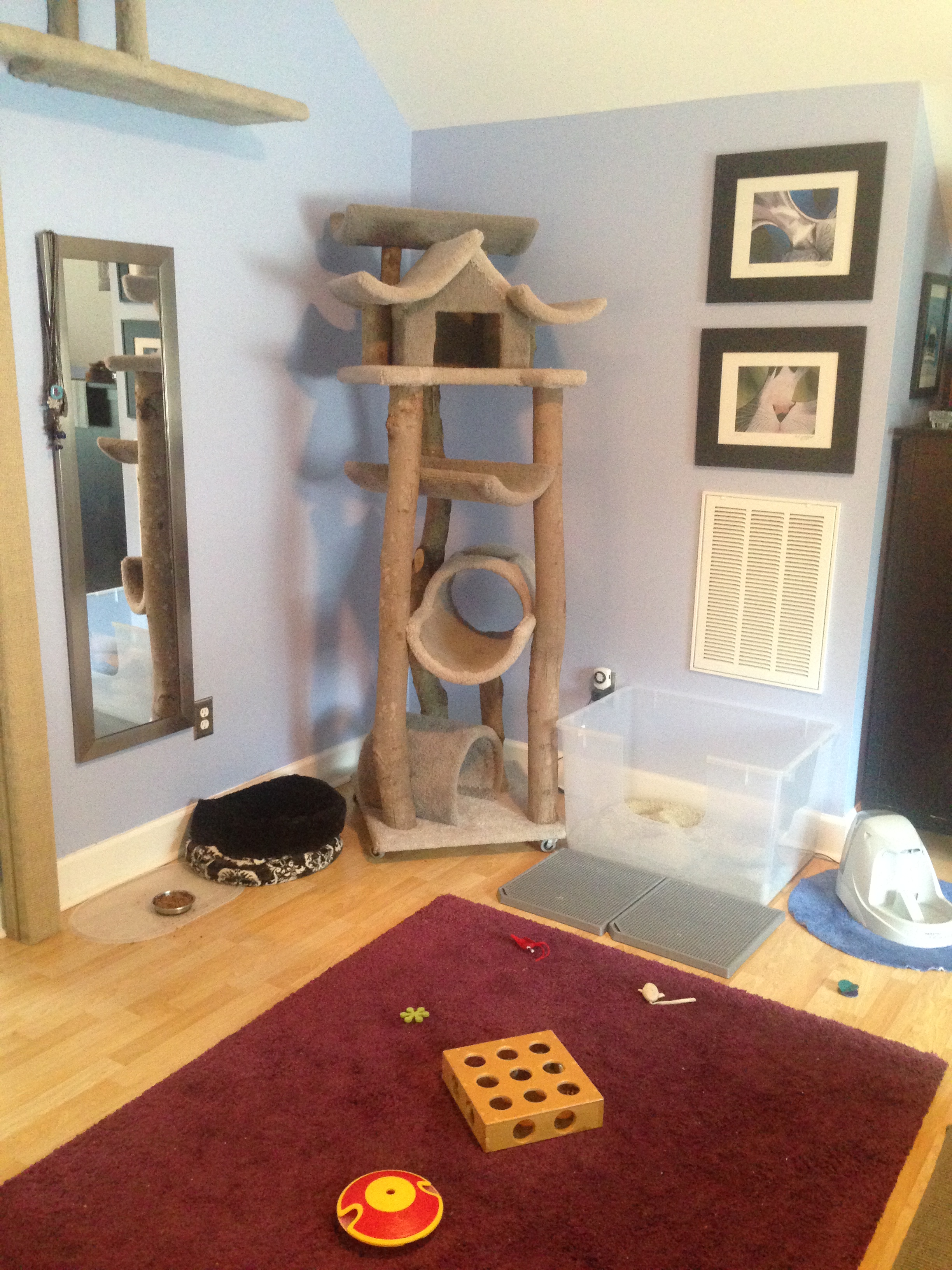
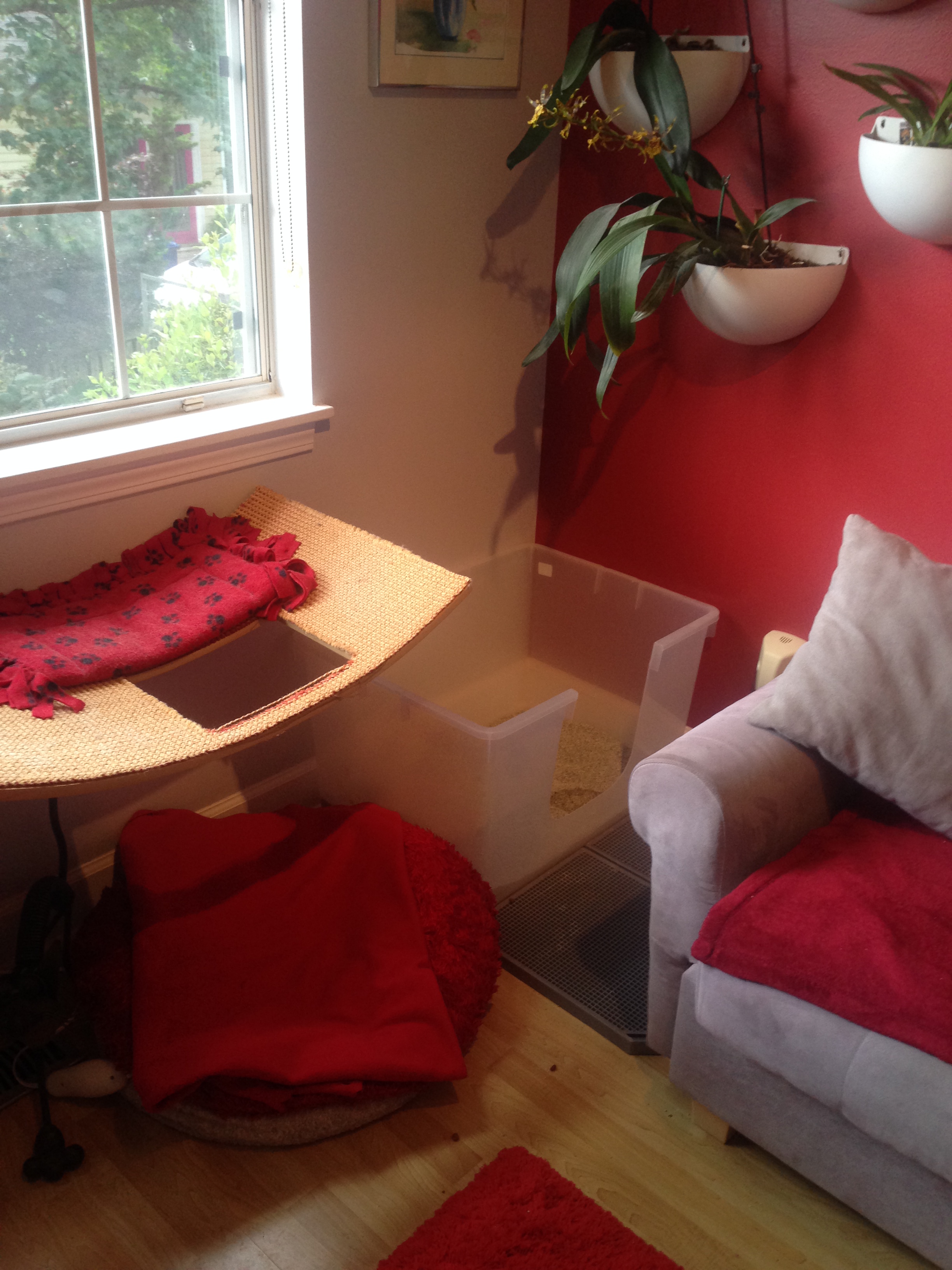
What cats DO NOT like...
Cat rooms (a.k.a. litter box rooms)-they are dusty, stinky and gross and cats do not feel the need to mark there. How much time do you spend hanging out in the "cat room" anyway? Food and water are often in these rooms as well which is also not ideal.
Having to go through a cat door to get to the box is really no different than a hooded litter box. It is threatening and scary because they cannot anticipate what is on the other side.
Automatic boxes are not preferred. Monitoring your cat's litter box output is a very important part of monitoring their health. The size and shape and frequency of the urine clumps and the consistency of the stool is vital information for you to know. Automatic boxes take that information away! If you use one, you should always have a regular box as well!
Locations where litter boxes should NOT be placed:
Laundry rooms-they are scary and loud
Basements-dark and dank with no desire to mark there
Closets-threatening and no different than a covered litter box
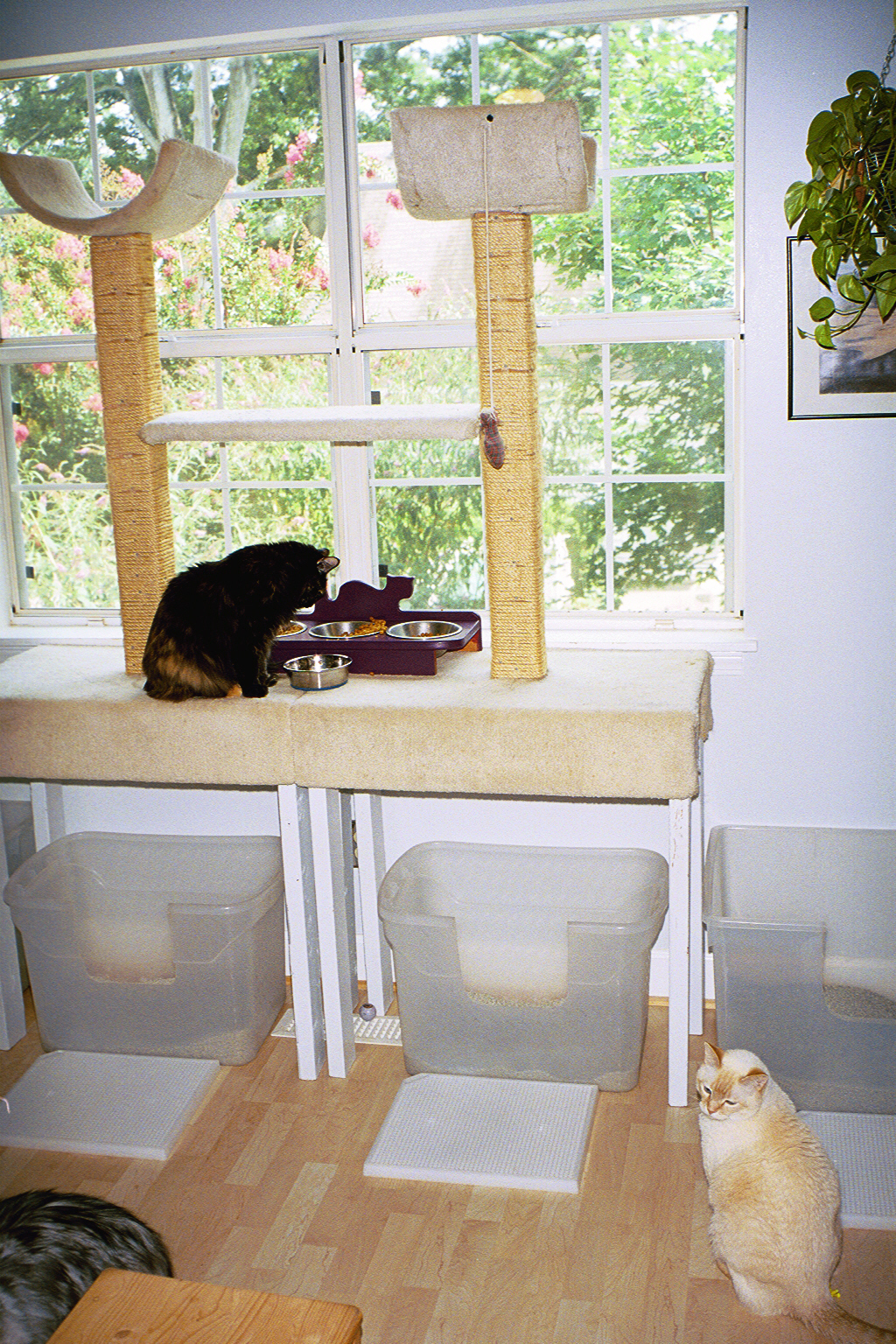
In summary
We humans work really hard at hiding litter boxes, we try to avoid scooping them, and apparently we cannot stand the sight of the box either. It's crazy! You have cats, and cats need to go to the bathroom. Why do we keep making it so damn difficult?
Big boxes, open areas, keep them clean. Have litter boxes you are proud of and be the change cats need!
One of the best compliments I have ever received was when a guest arrived at my home and asked me, "where is all the hair and why doesn't it smell in here"? I had 16 cats and 3 dogs at the time. Our home is 1200 square feet and I made room for 13 litter boxes.
Join me, we can do this folks! Get the scoop and be the change!
IKEA hack-DIY Food Puzzle for Cats!
I am excited to share my latest homemade foraging toy!
I have constructed a stationary food puzzle out of an Ikea chair! That is right, you heard me correctly, an Ikea chair!
There is no limit to what you can use to make cool, interesting and engaging food puzzles.
Check out the instructions below to create your very own stylish foraging board.
Thrilled with how this turned out.
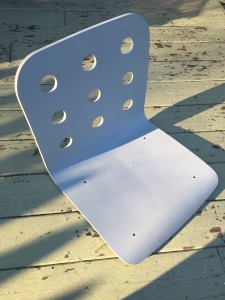
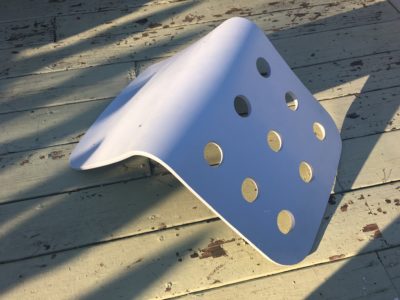
What you will need:
An Ikea "Jules" chair available in adult and children's sizes
Some sisal carpet
Glad/Rubbermaid small storage cups
Velcro
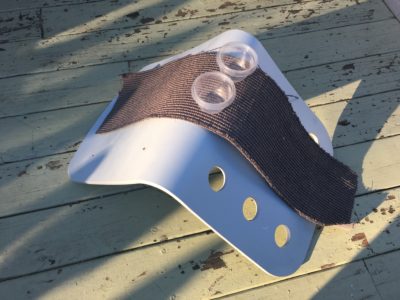
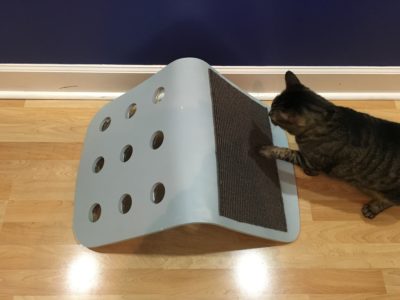
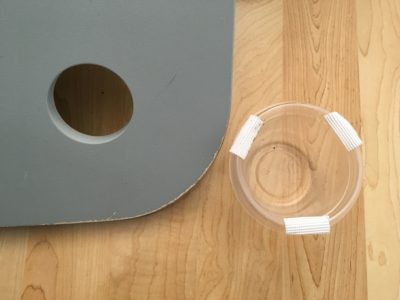

Assembly Tips:
Place the plastic like side of the Velcro on the cup and the fuzzy side of the Velcro on the chair. This will make the cups easier to wash later and keep the Velcro from getting wet and soggy.
Be sure to place bottom edge of the cup in line with the hole if your cats are not master foragers. Leaving a "lip" it can make it much more difficult to remove a piece of dry food. However, this "lip" could be great for the cats that need more of a challenge.
